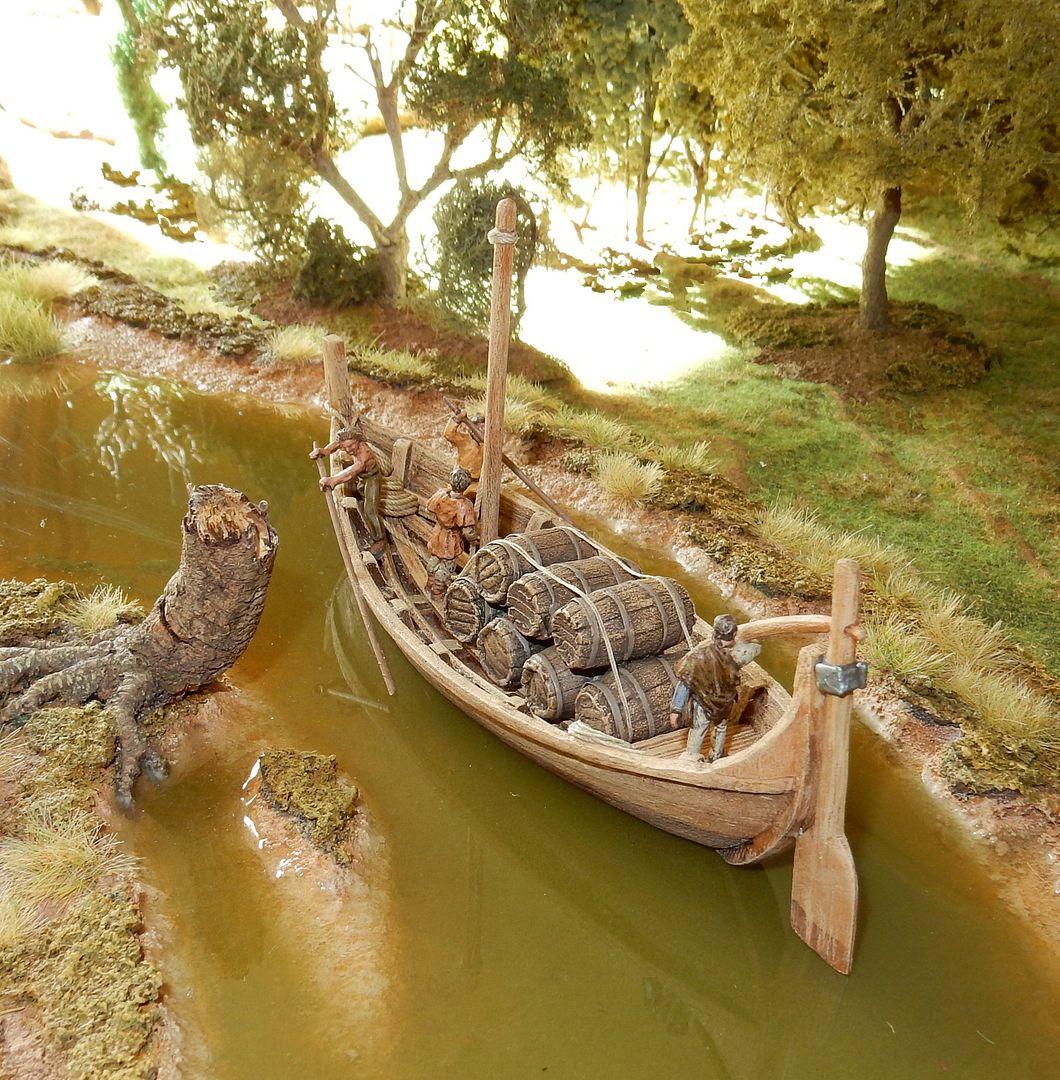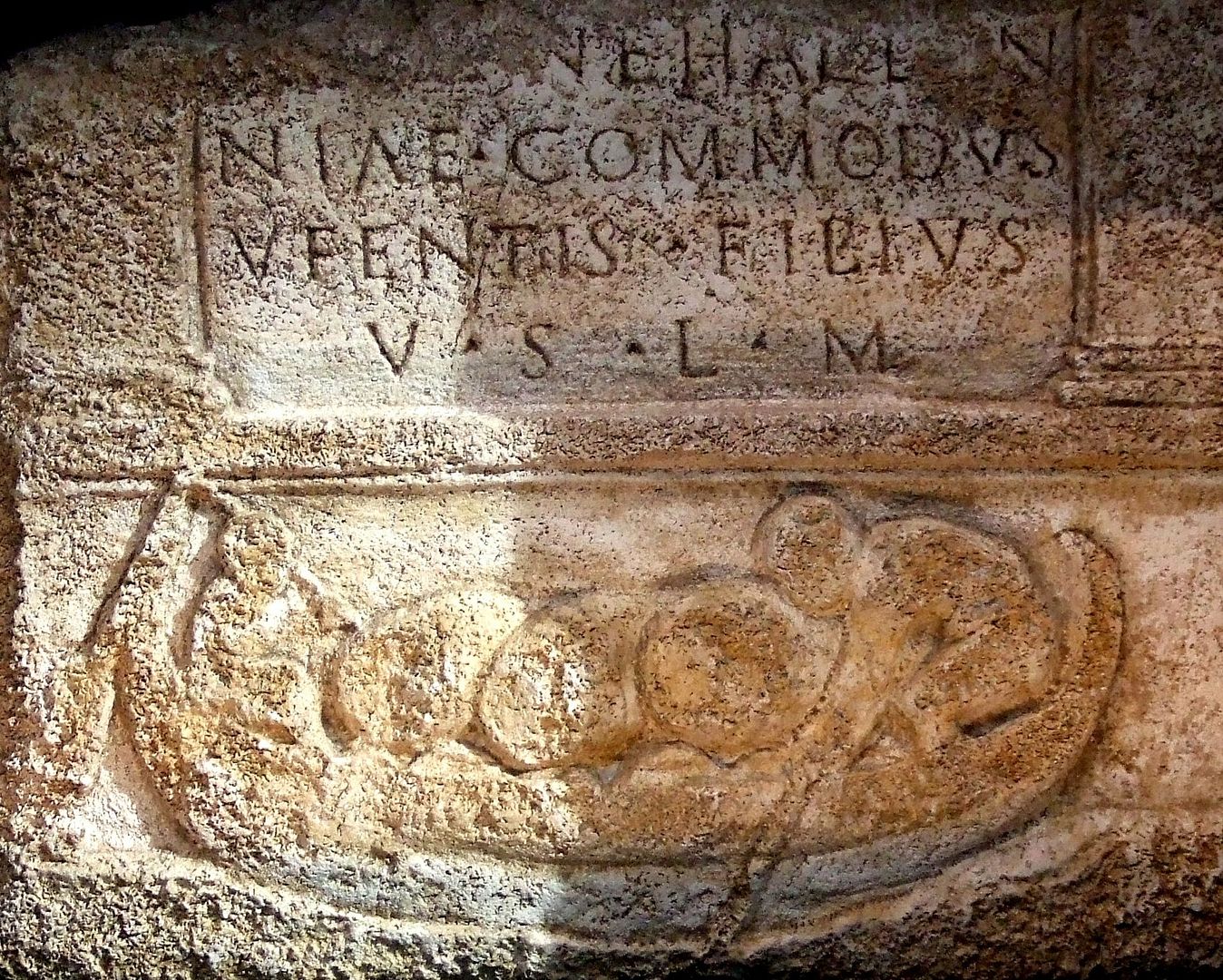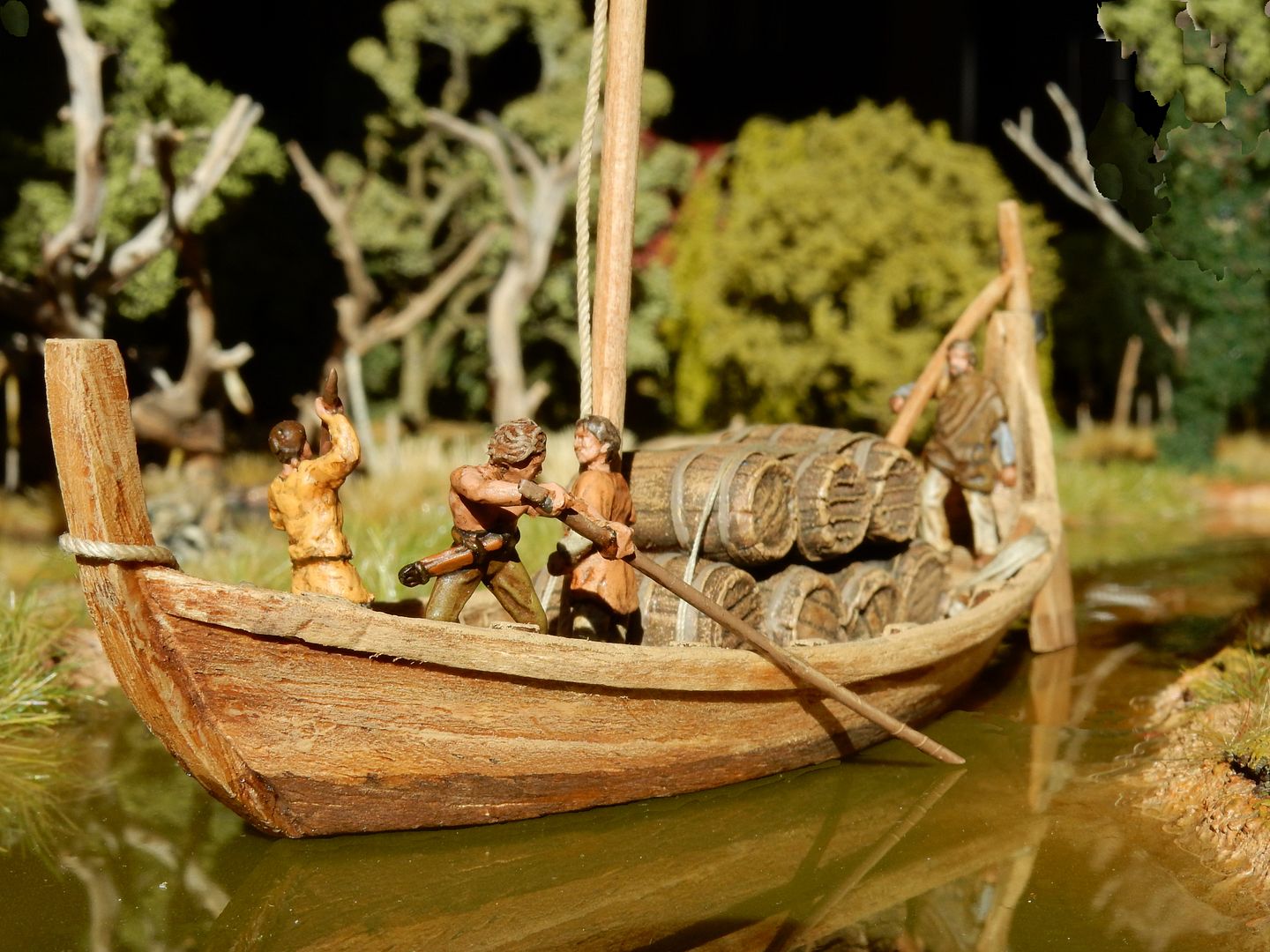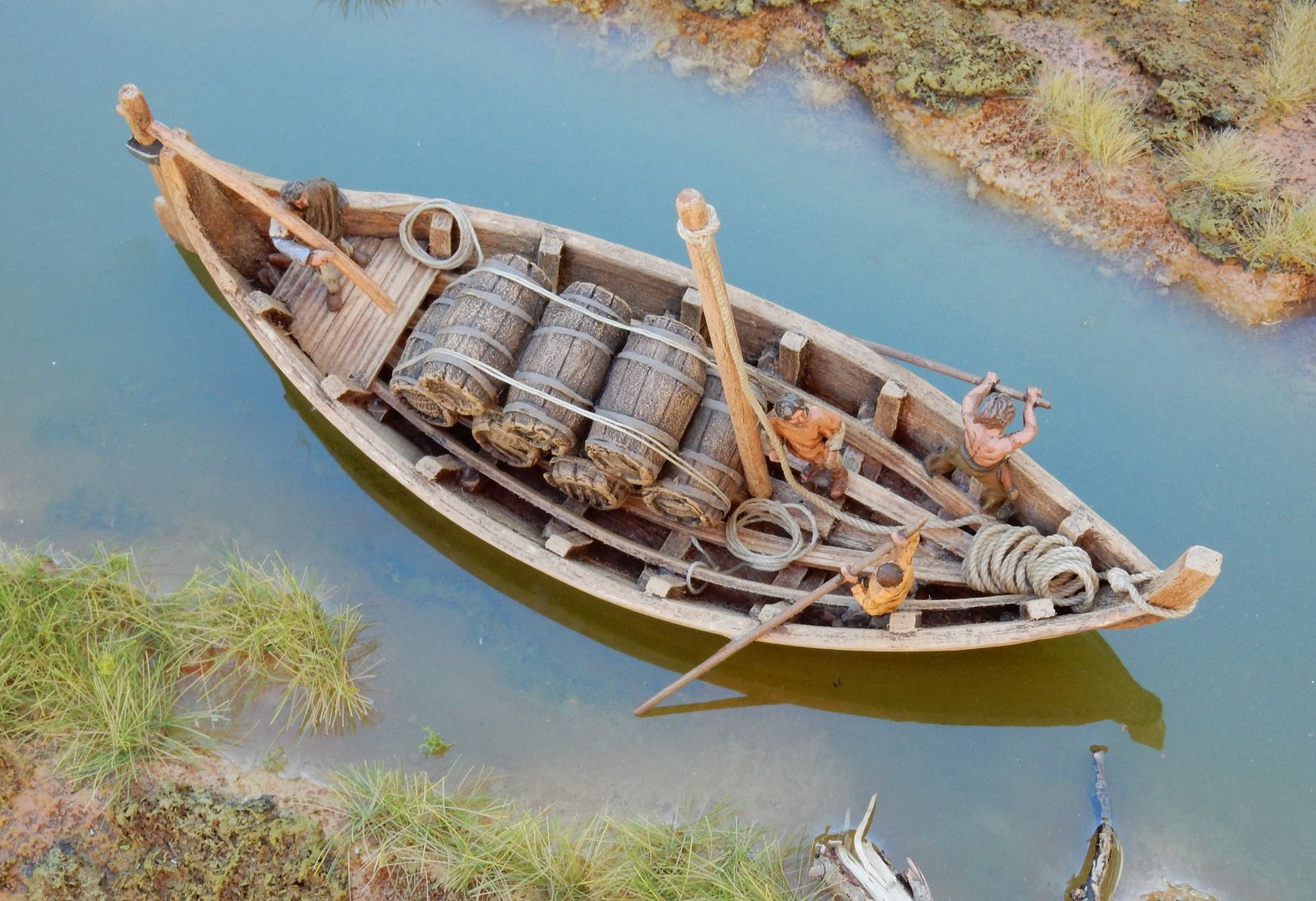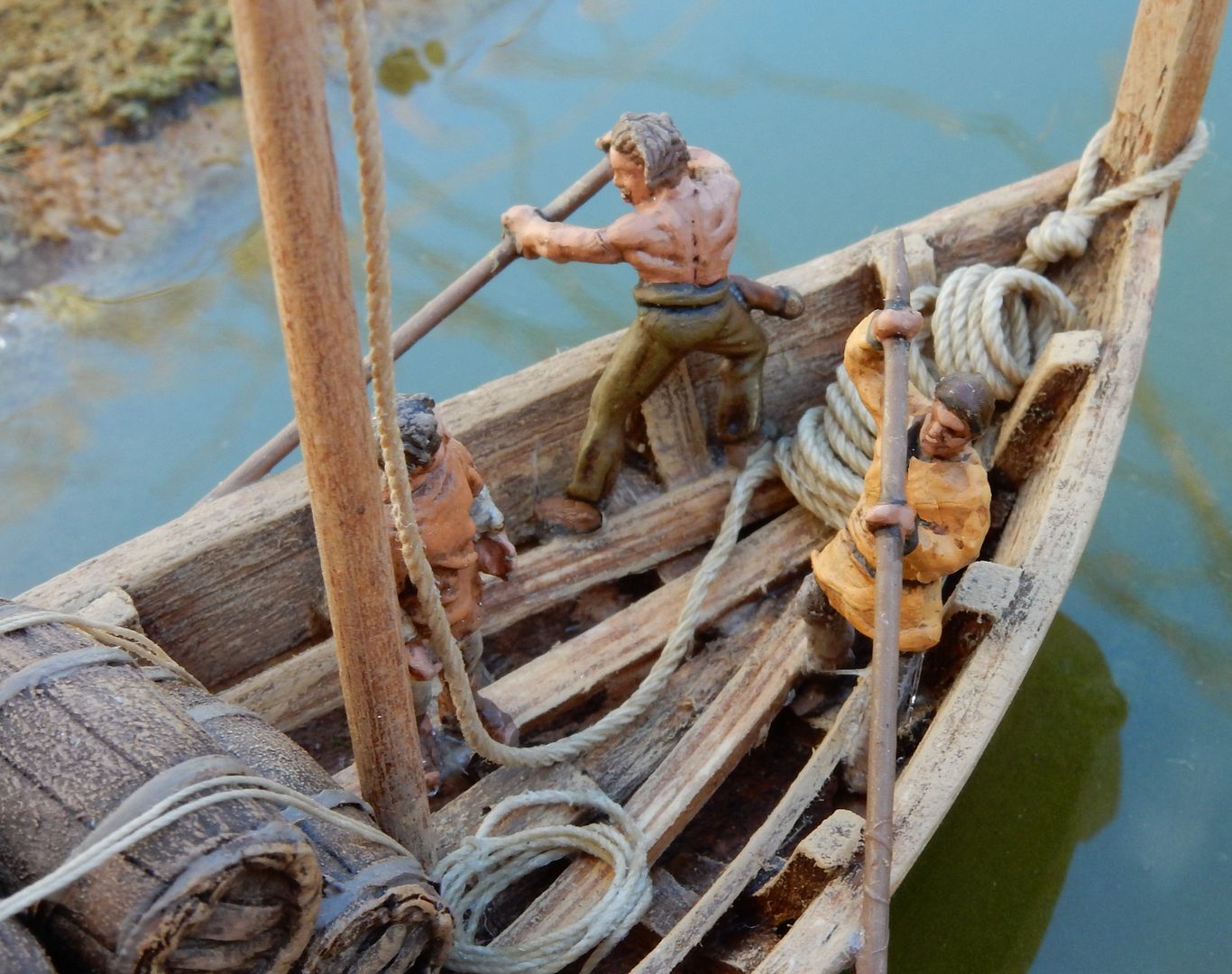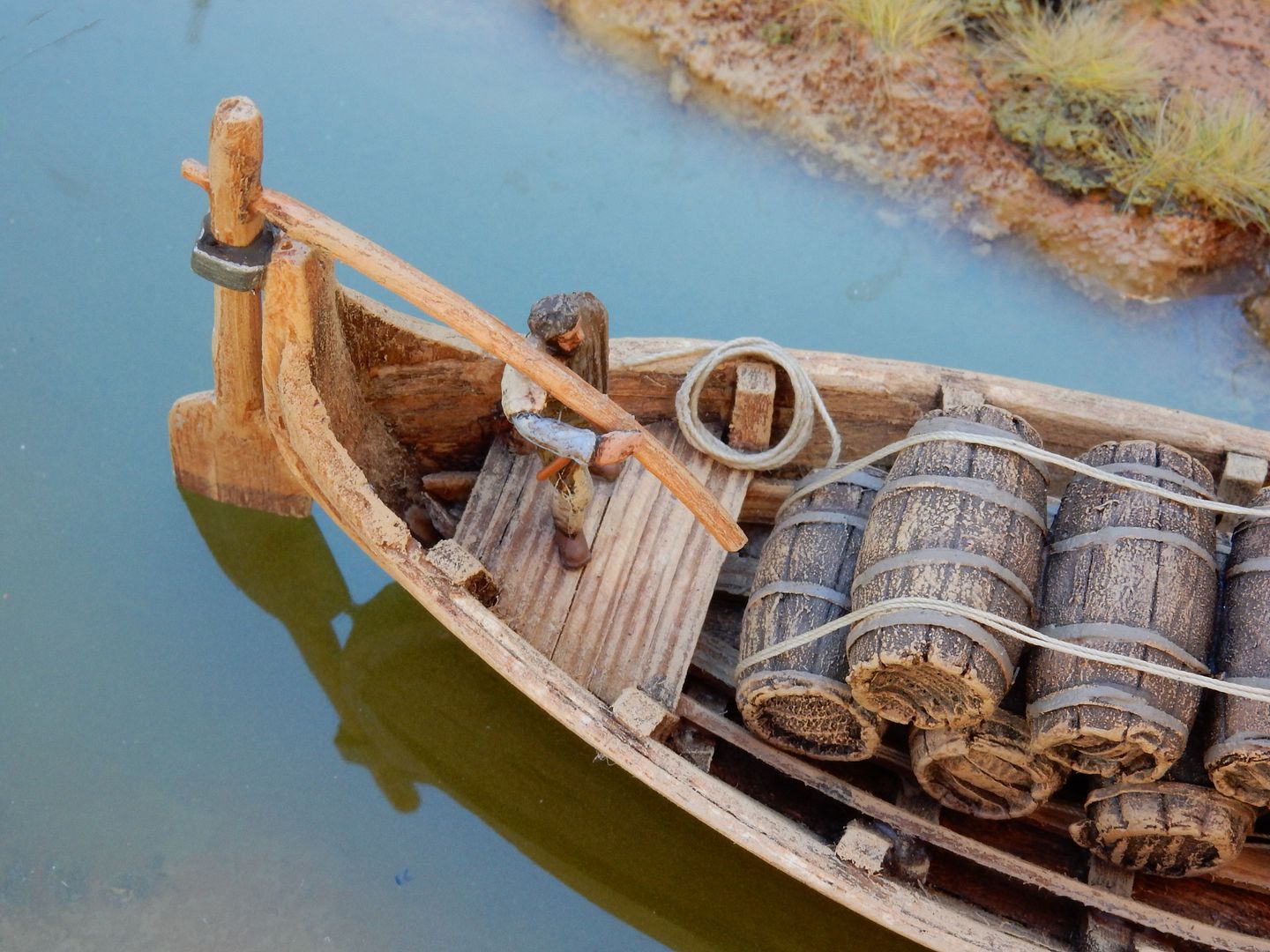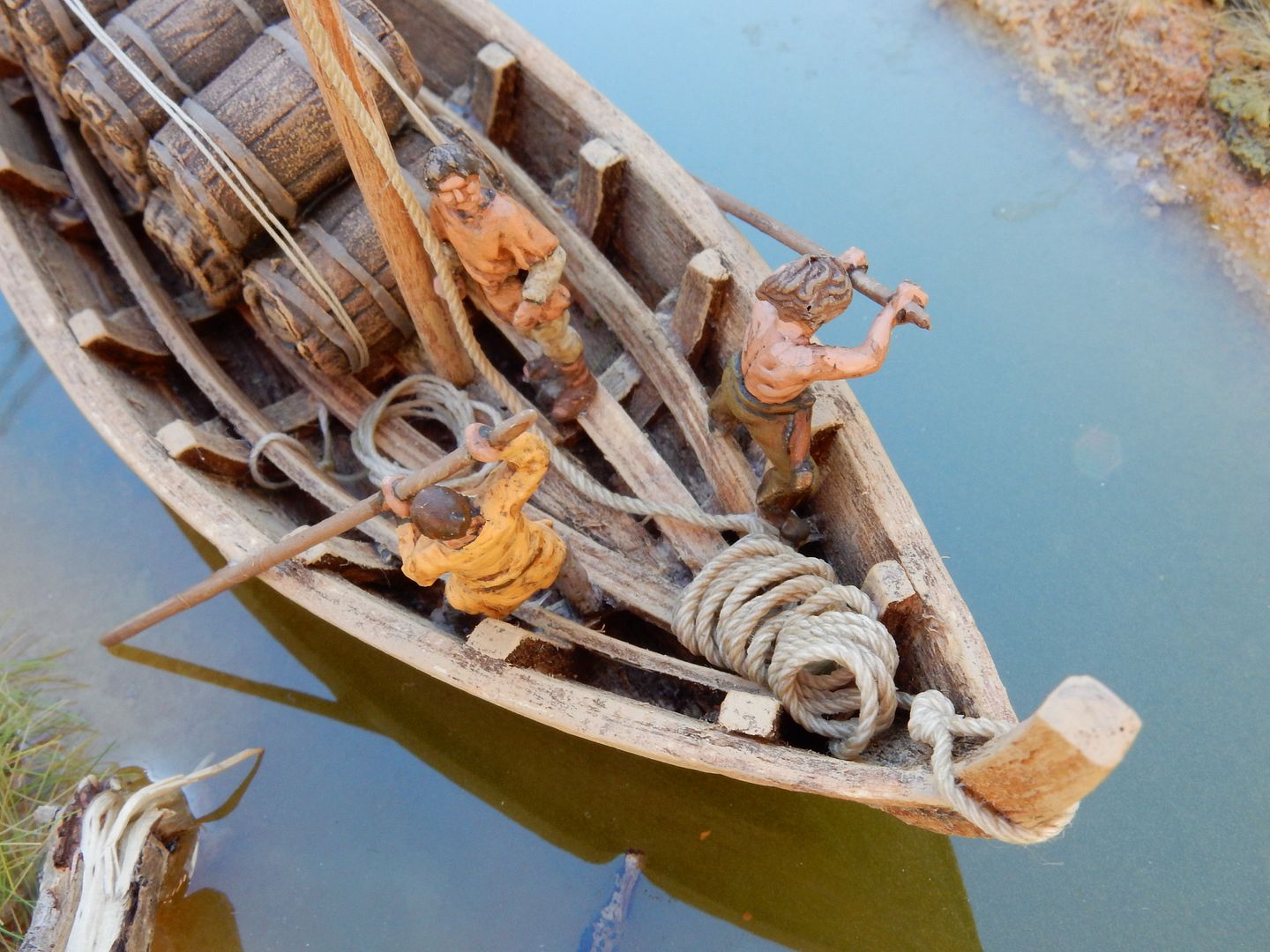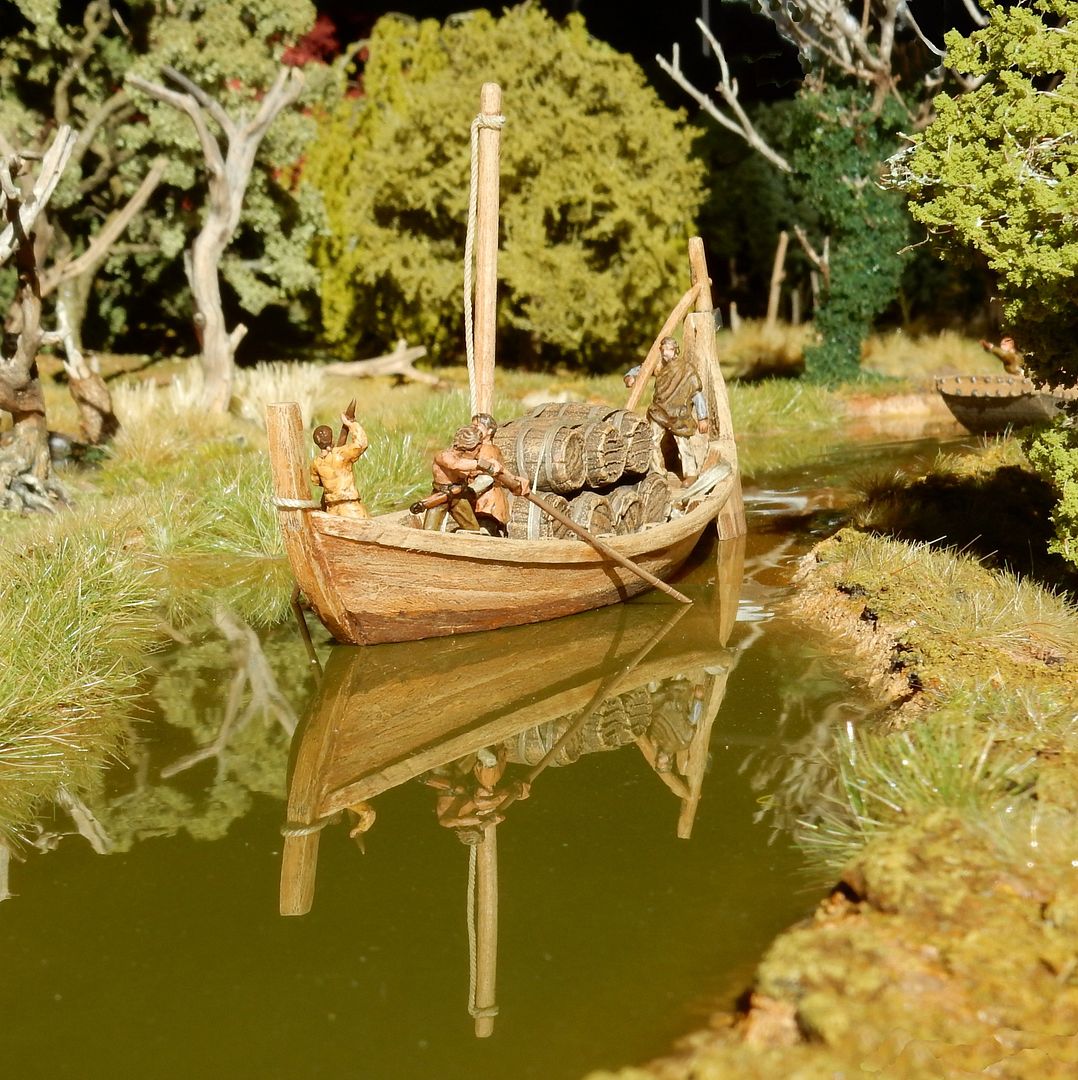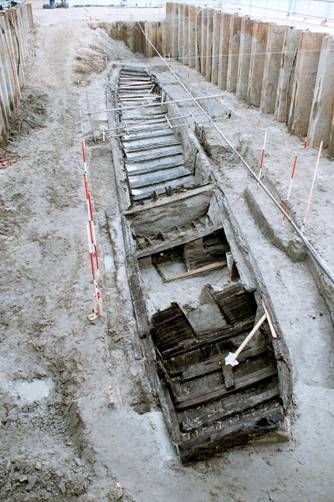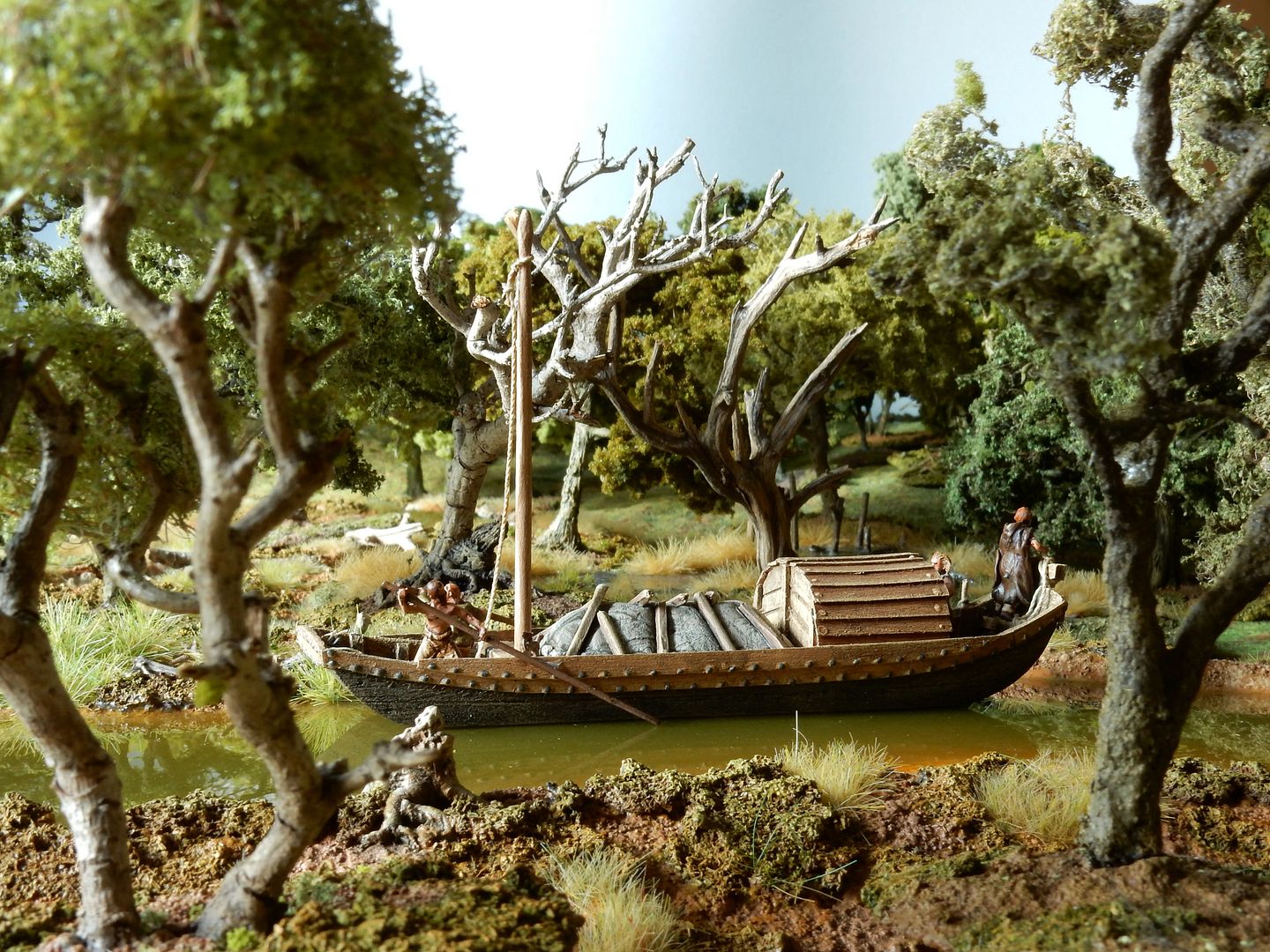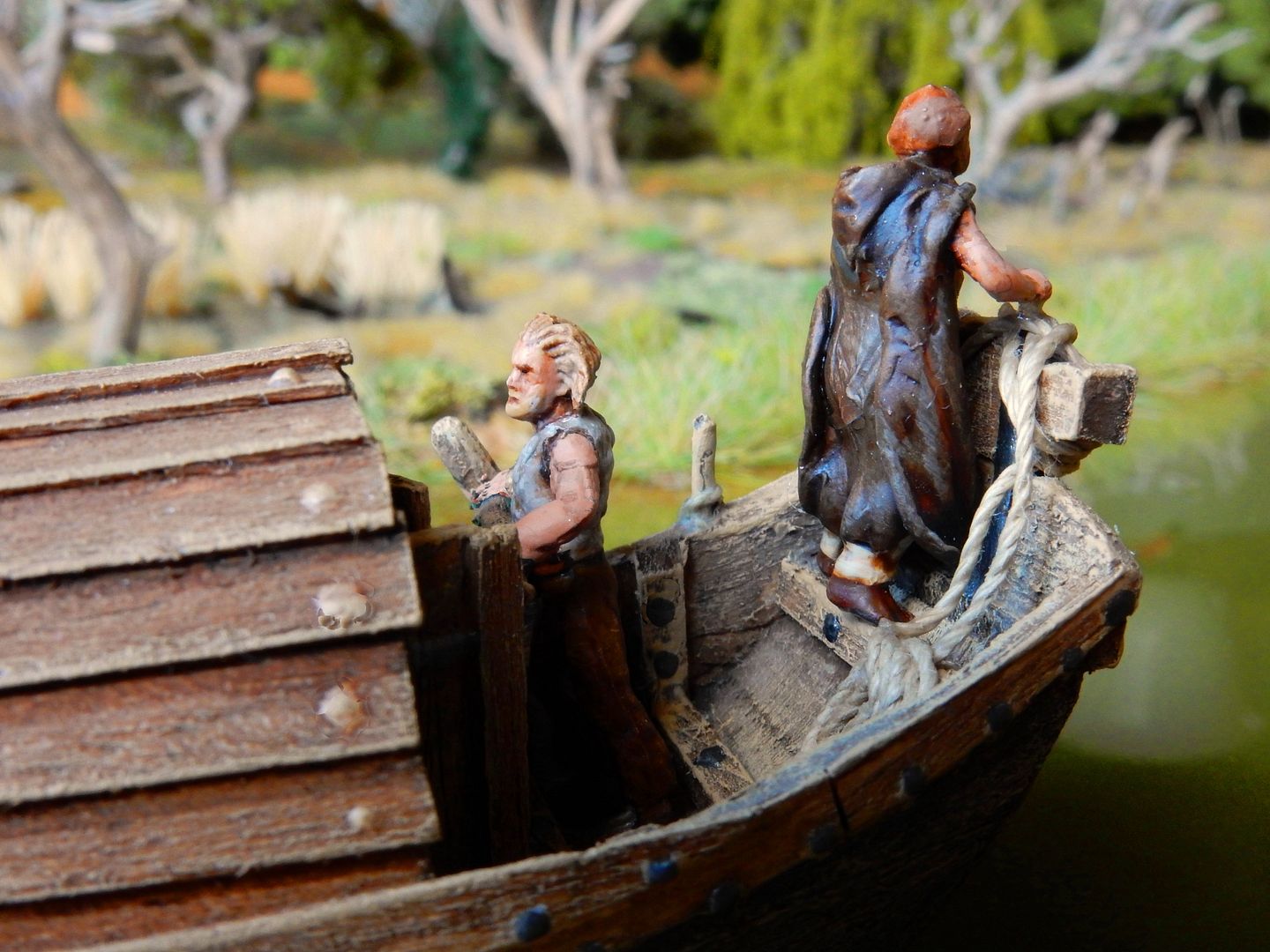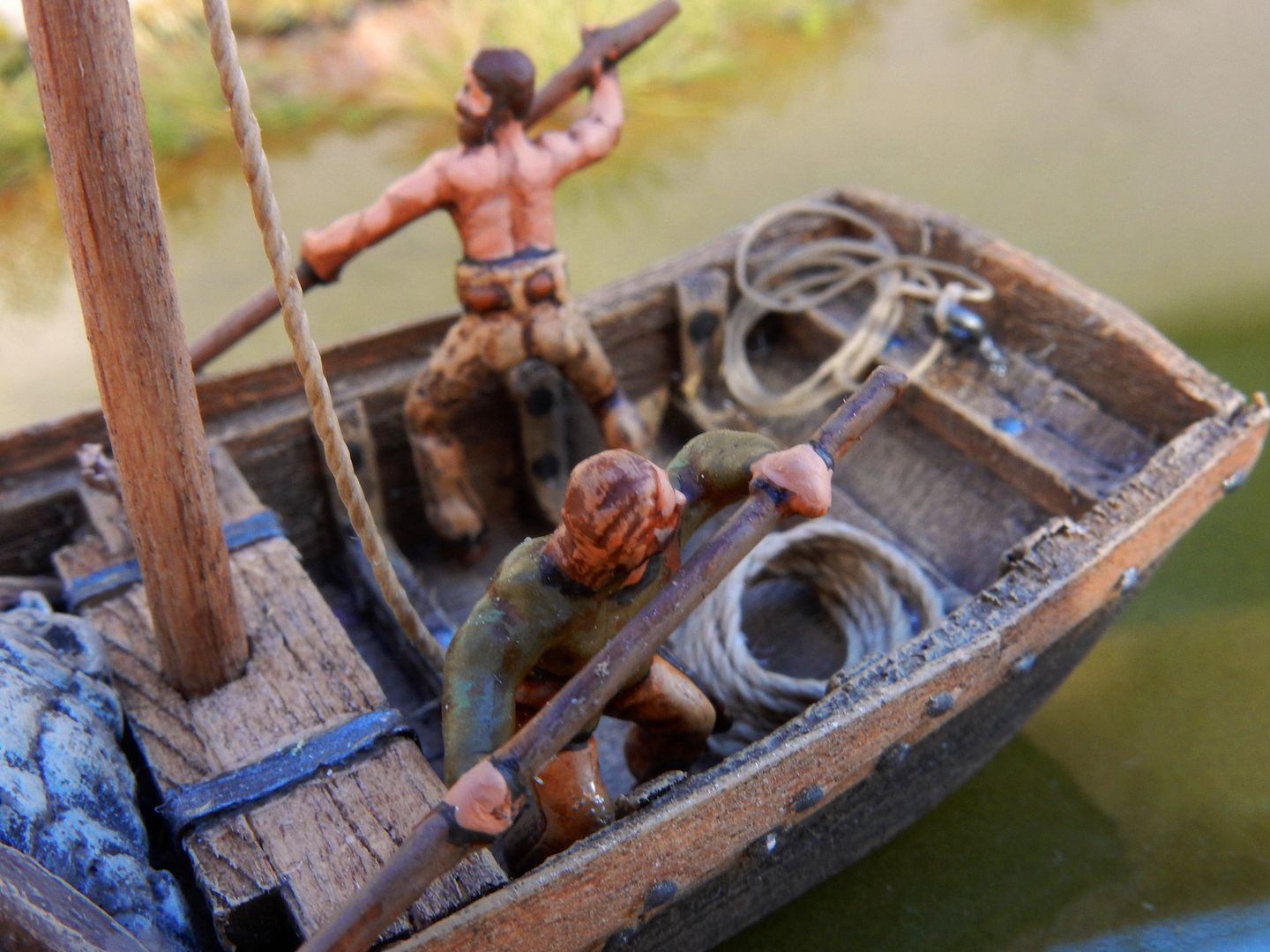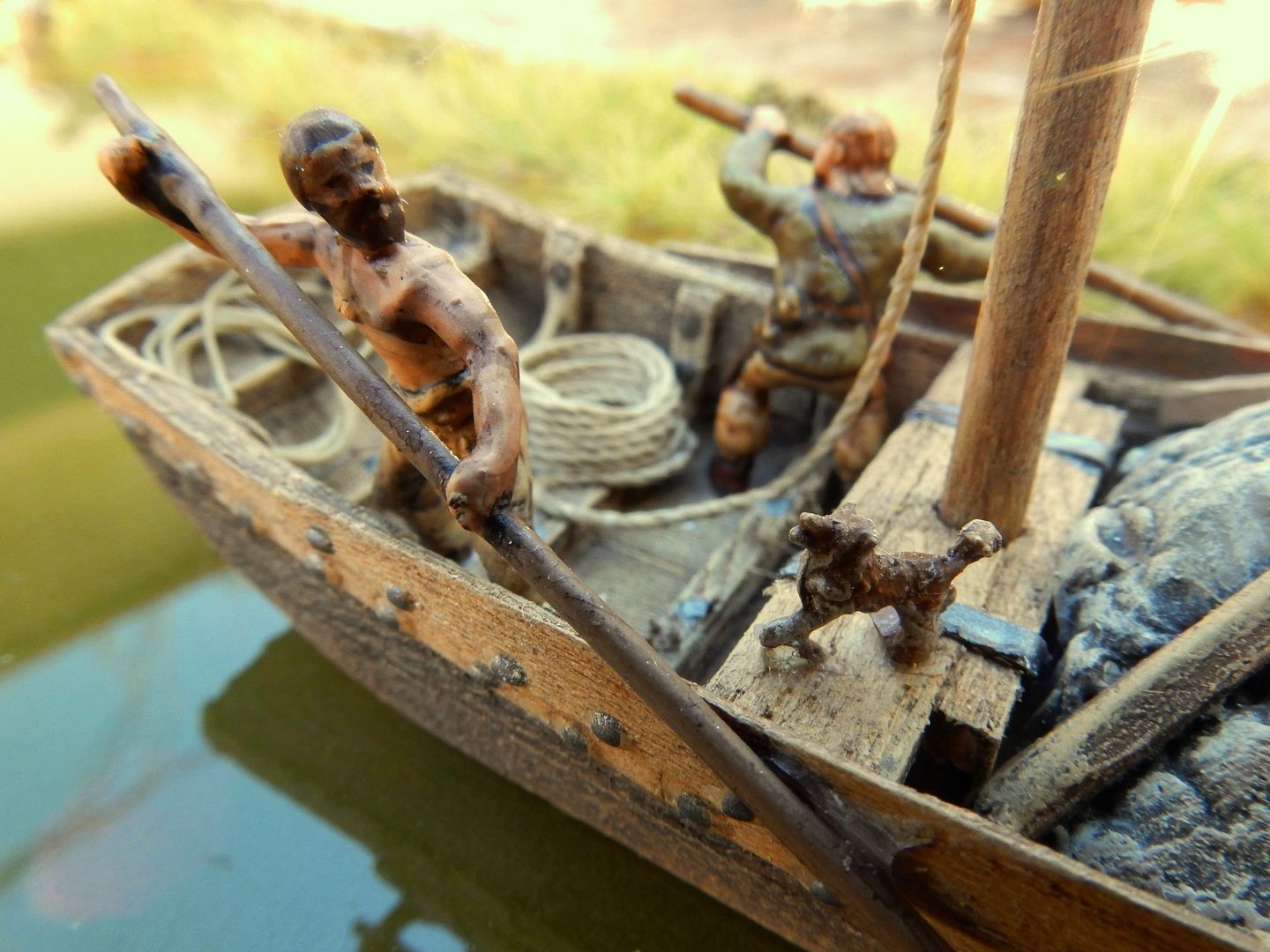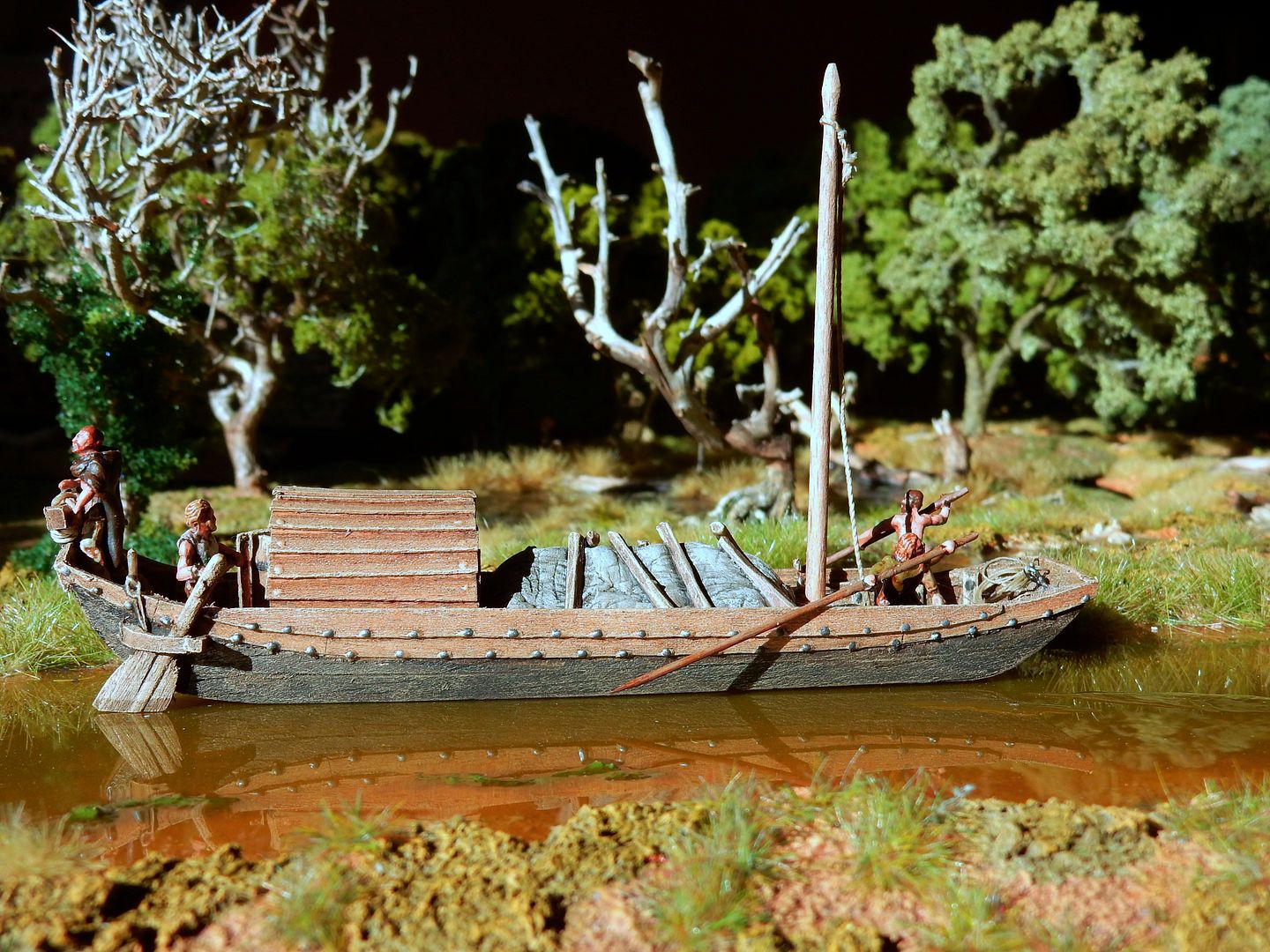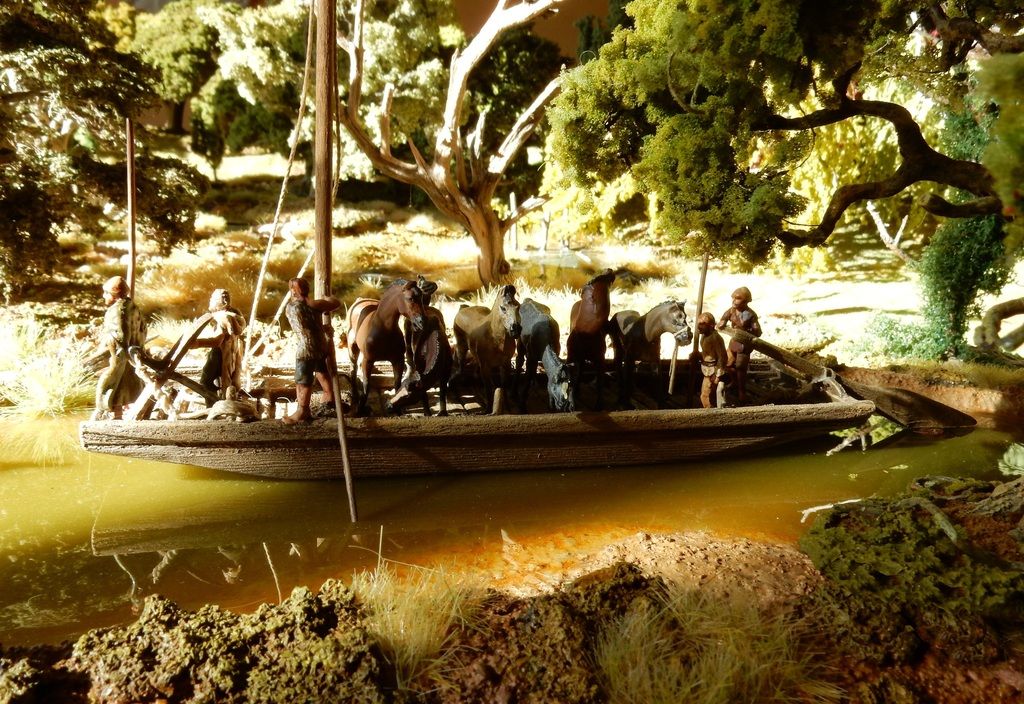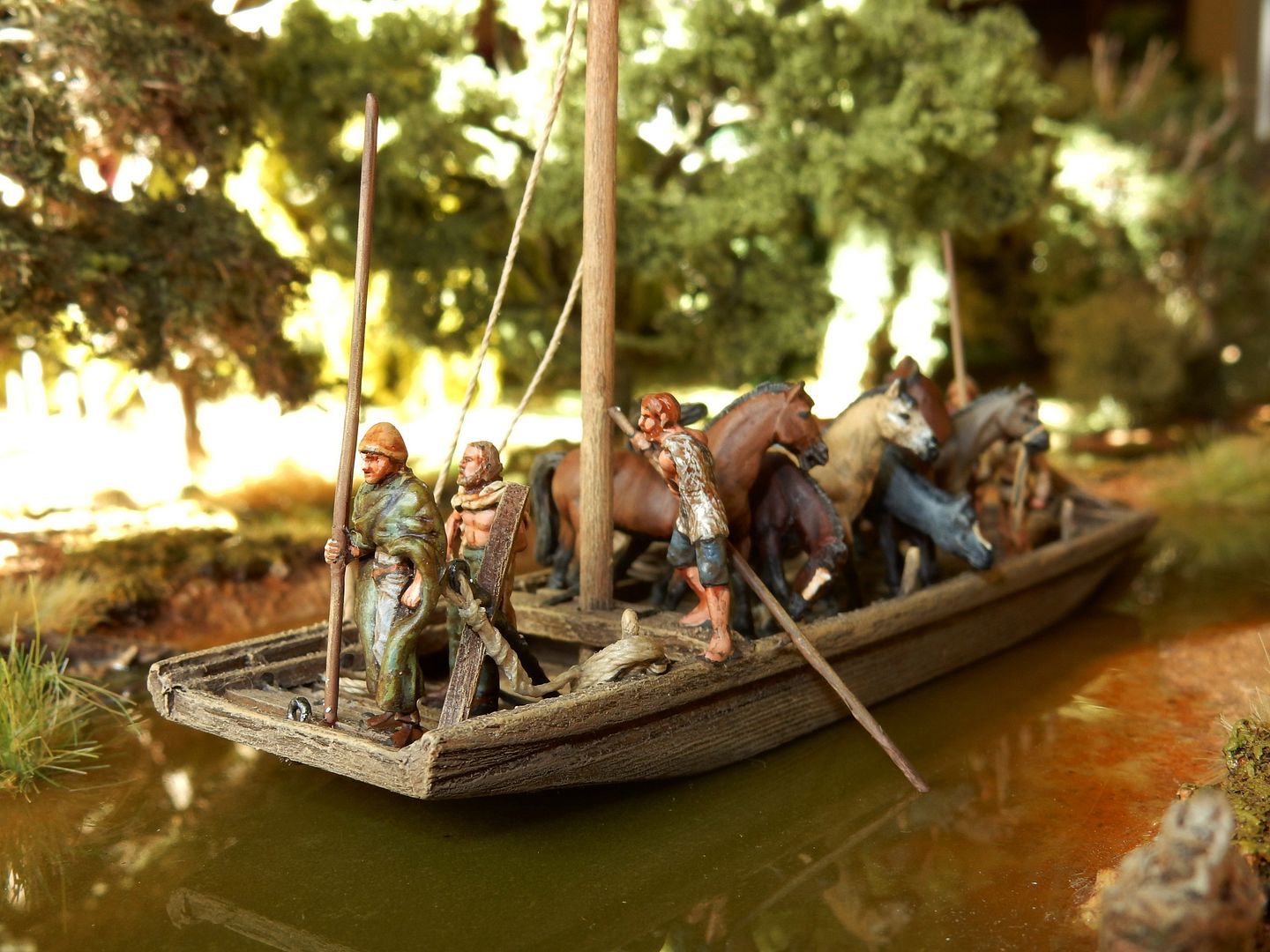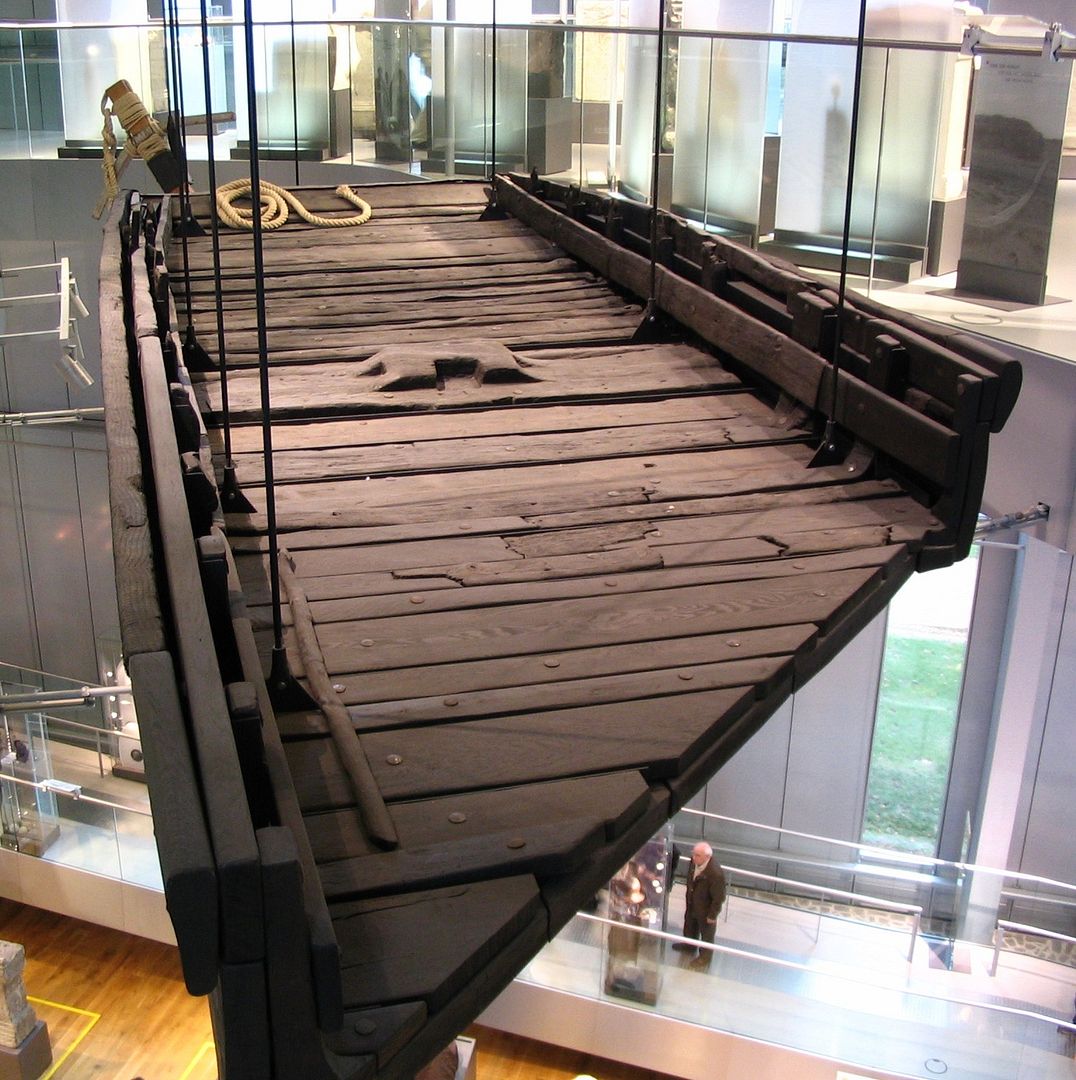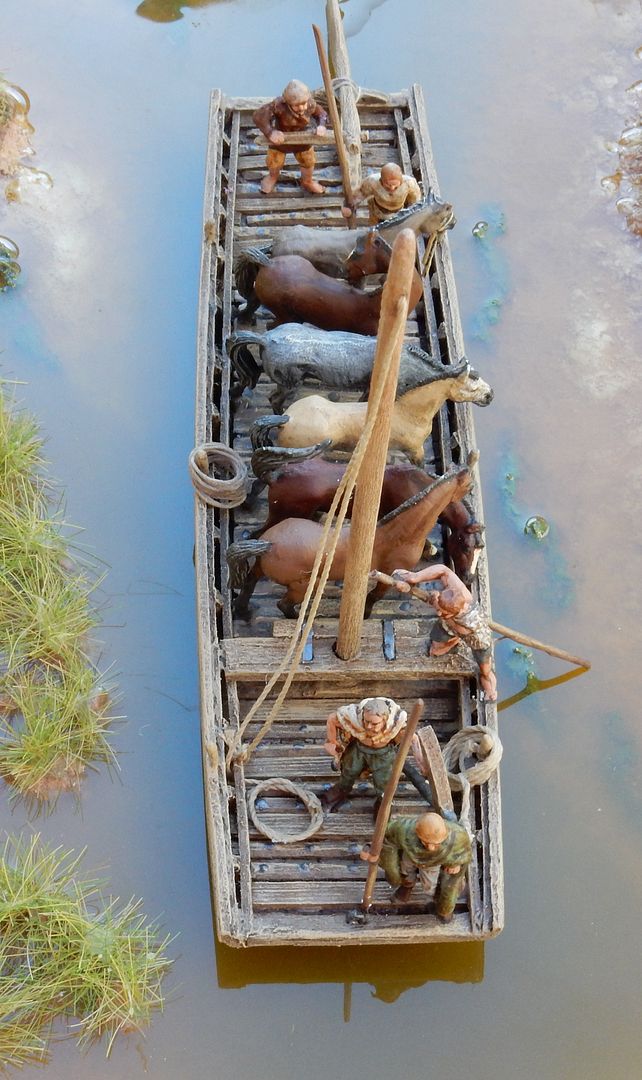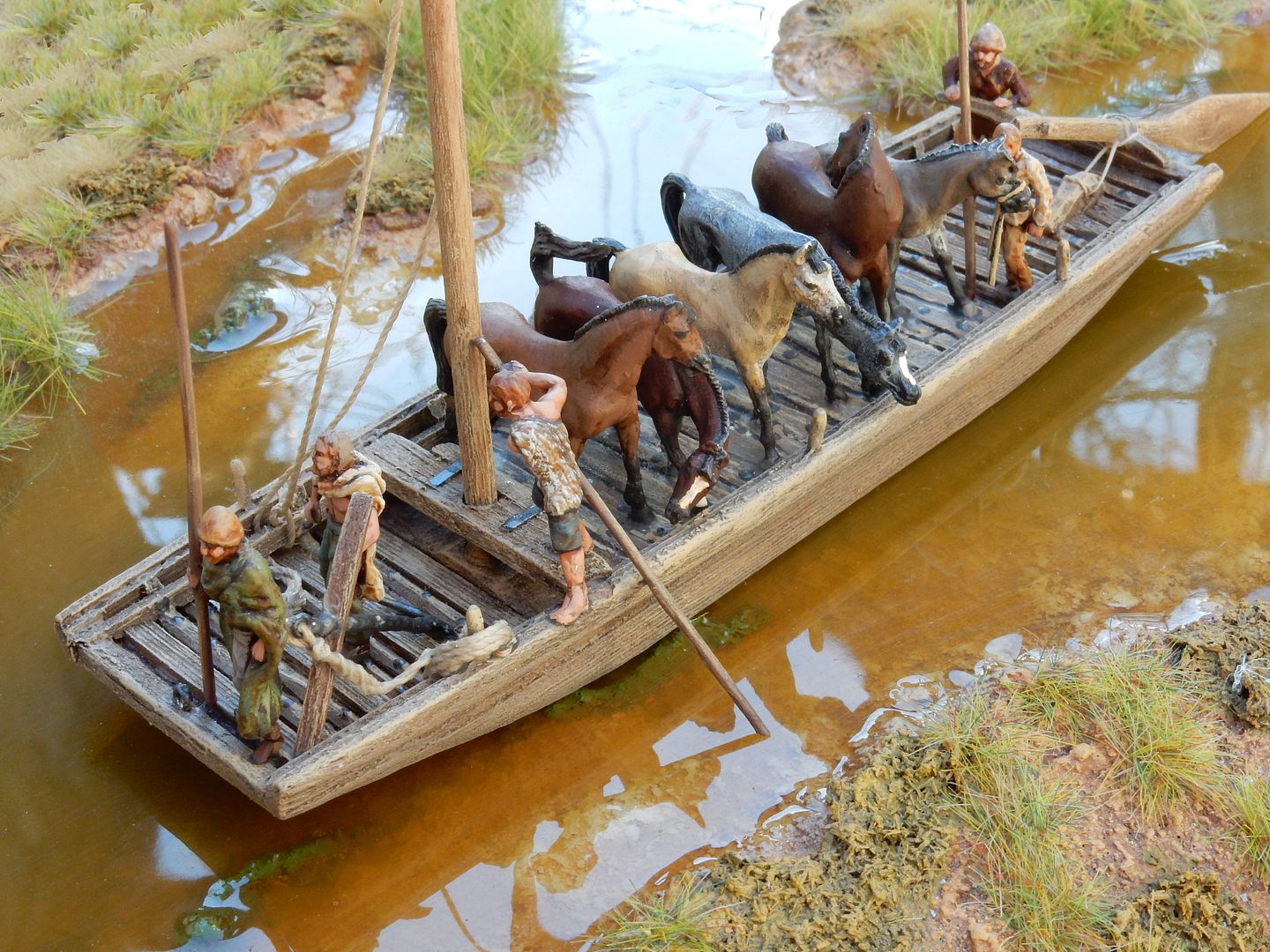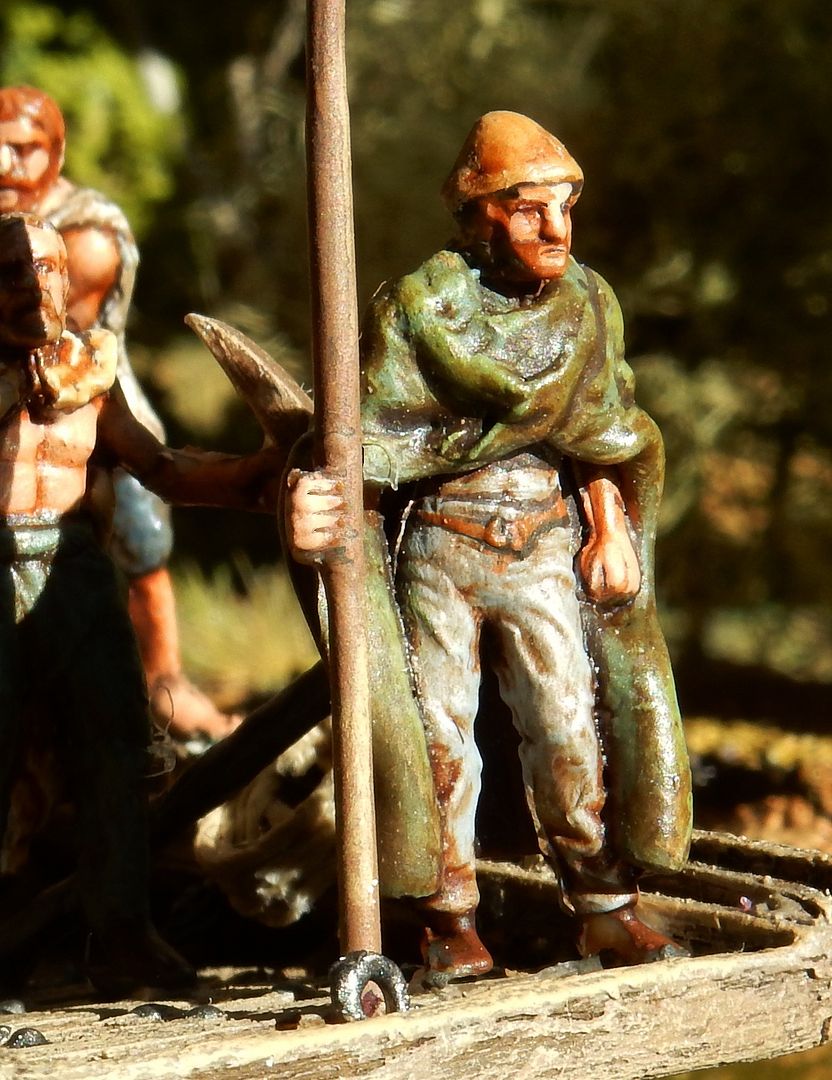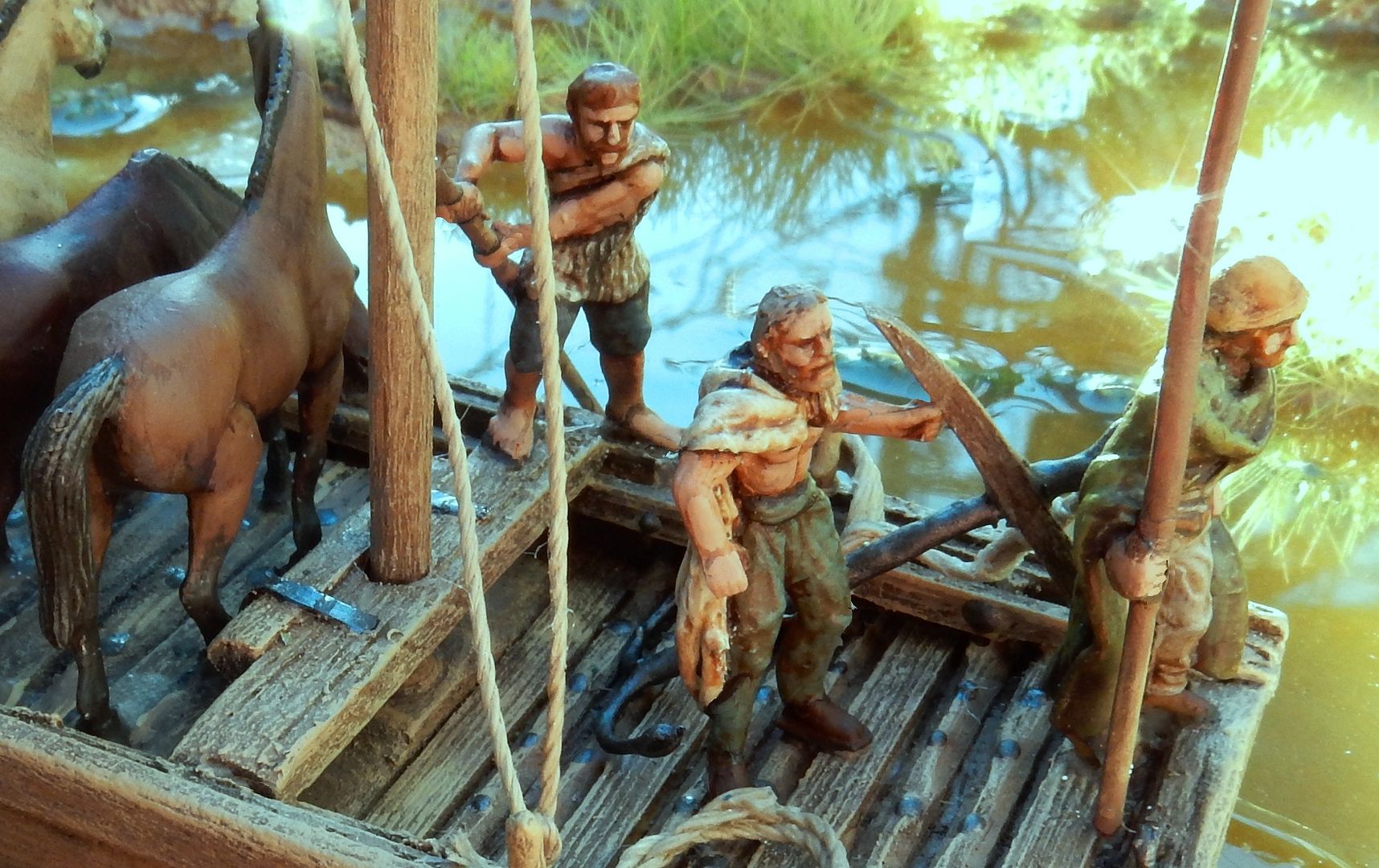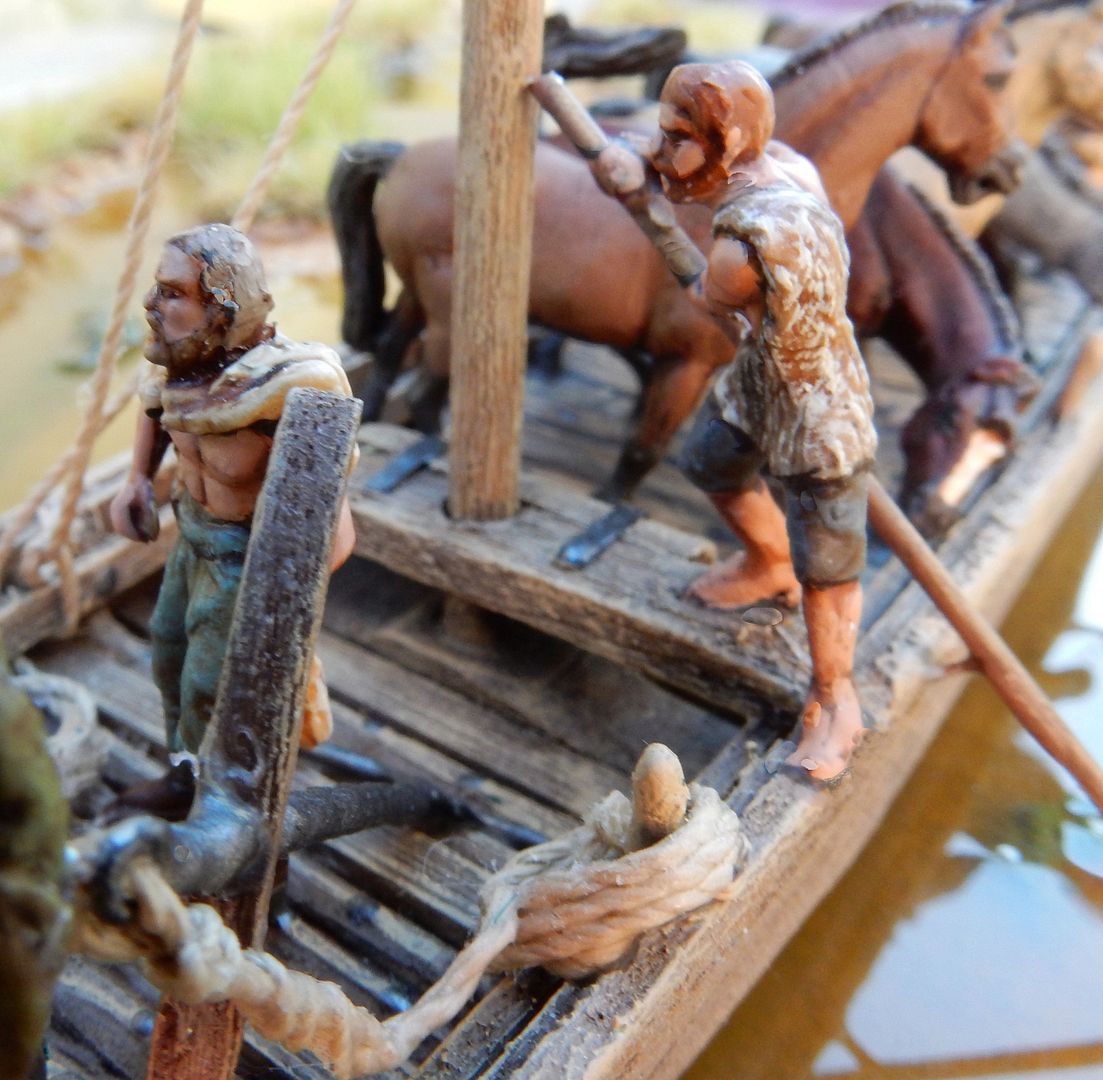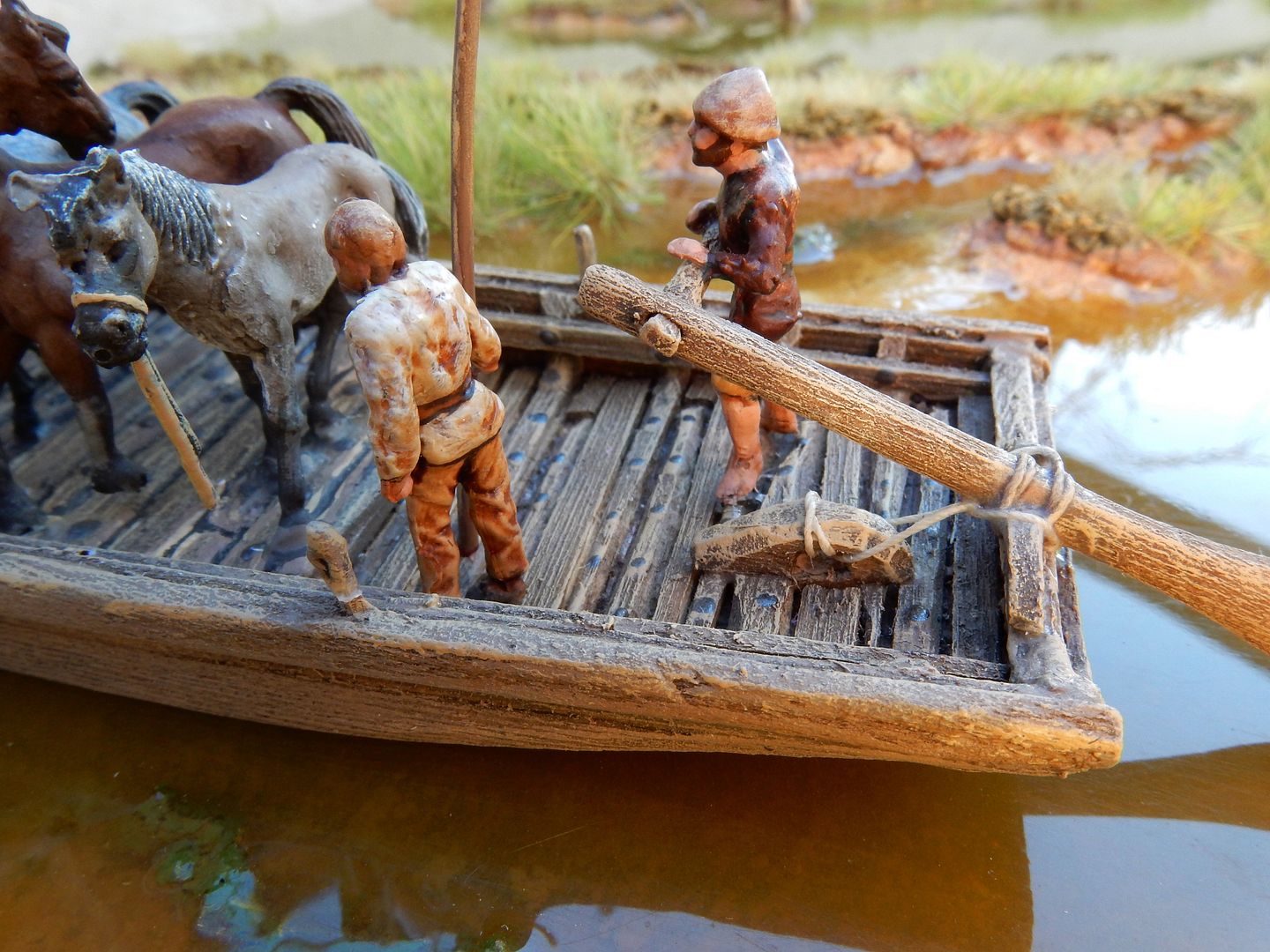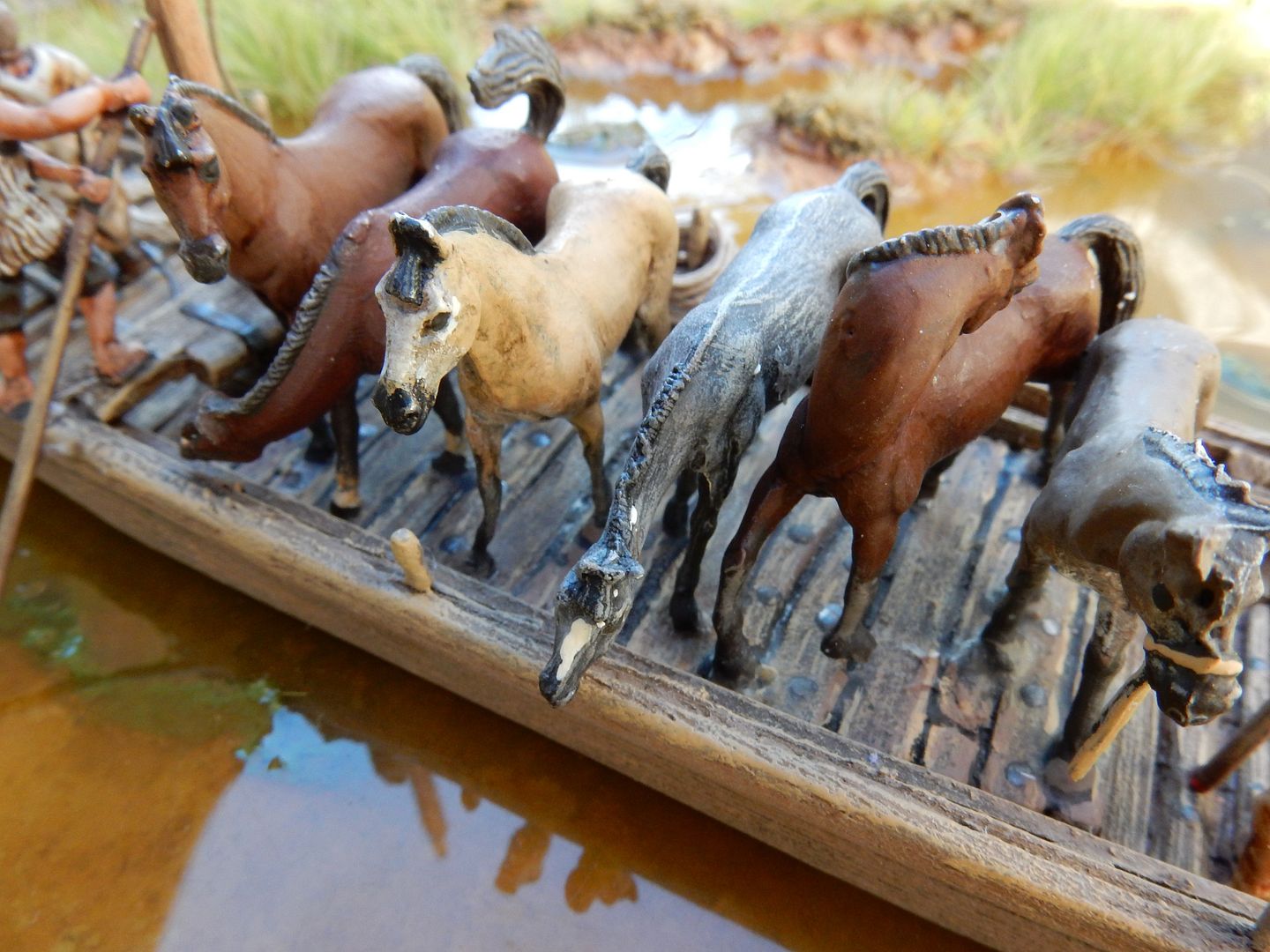Dear huib,
Your questions force me to think this all over once again.

I try to answer:
huib wrote:These boats look badly equiped for serious rowing
Yes, only one of them is equipped for rowing, but there are 7 different ways to propell such barges:
1: floating with the riverstream. Even up to the 19th century there were types of wooden Rhinebarges build for one way traffic only. It was too expensive to row or tow such a boat all the way back upstream (an early example of our modern consumer society

.) After arriving in the Low Countries these boats were disbanded, the wood was sold and re-used for other construction purposes.
2: Paddling while sitting or kneeling in the boat like the German tribes did with their log-canoes.
3: Rowing while sitting or standing with the oars fastened to the boards of the boat,
4: Poling while standing or walking through the boat.
5: Sculling while standing at the stern moving a fastened oar.
6: Towing by humans or animals that walk at the riverside. A man in the boat with a pole has to keep it from drifting towards the riverbank.
7: Sailing.
huib wrote:according to you the masts were not for sailing but for towing
In fact many of these barges could be equipped with a sail. Here is such a reconstruction of De Meern 1:

Last week I was in Trier where I found a tombestone depicting a sail from a boat that must have travelled the Moesel River.
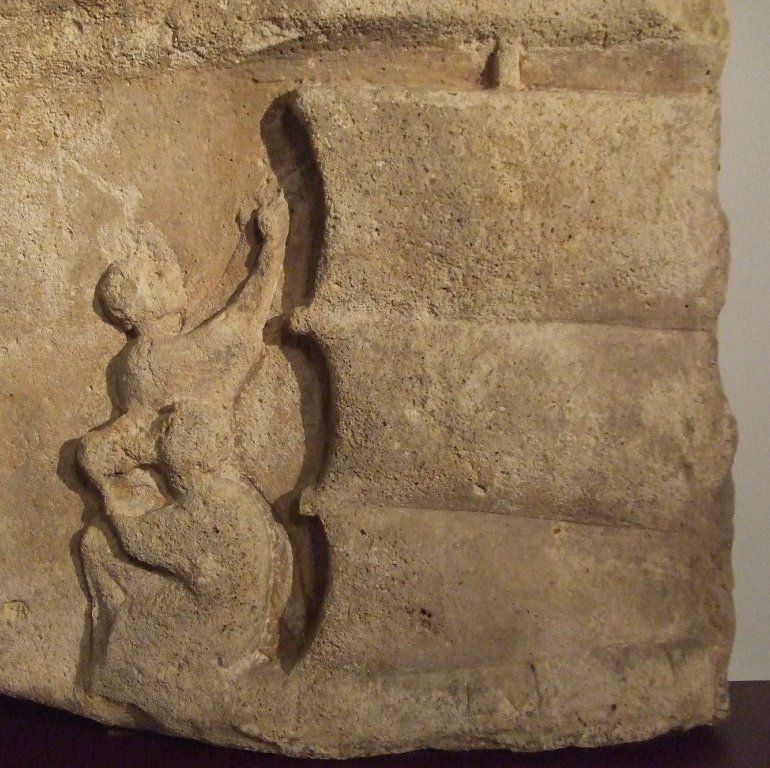
I did not build such a sail for gaming reasons.
Also sailingconditions are very poor on a river, especially in those days before the introduction of the tri-angled latin sail. Sailing upstream of a big river like the Rhine or Moesel, between hills and mountains? I am not too sure. In the Rhine delta it must have been common though since the current is weaker, the country is flat and so there is much more wind.
huib wrote:towing demands towing paths all along the river shores. Were they existant in late antiquity?
I don't know. Does anybody know? Towing paths were introduced in the 14th century for draughtanimals in the Netherlands. The Romans must have tried to make paths along their main waterways too. But the lack of these and problems with crossing the side-streams probably explain why Romans had their boats usually towed by men. Men will, compared to horse, mule or ox, be much more succesfull in crossing swamp, streams, bush, trees or whatever will be in their way when towing along the riverside.
Like the men on this tombestone from Trier, probably depicting the Moesel River.
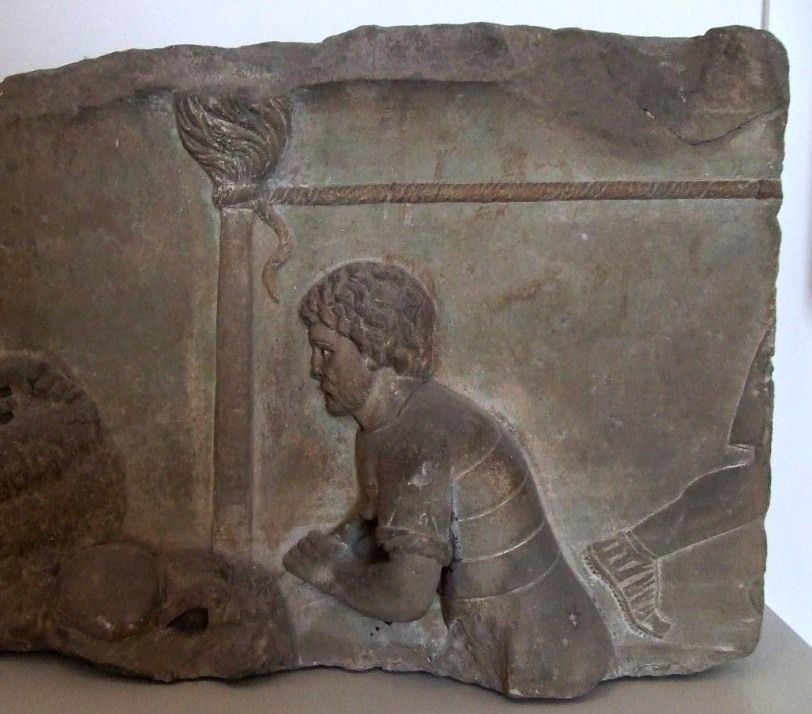
The man with the beard is poling backwards.
The other man (its leg) is towing the same barge on the riverside. His towing cable runs on top to the short mast.
And this one, I found it in Rome, so it can depict the Tiber river. One of 3 towing men is missing.

When traveling upstream towing and poling works best but poling only works in shallow streams. All other ways will take too much energy or time when going upstream. So towing is fastest as long as the riverbank is accessable.
Another stone from Trier shows two men poling.
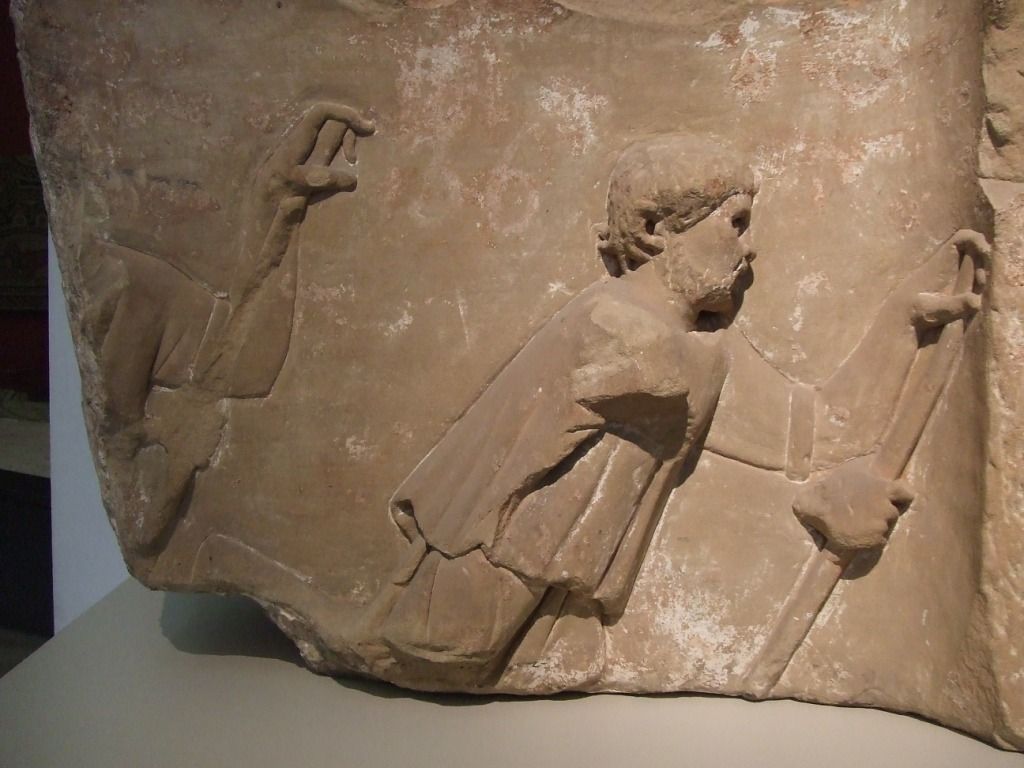
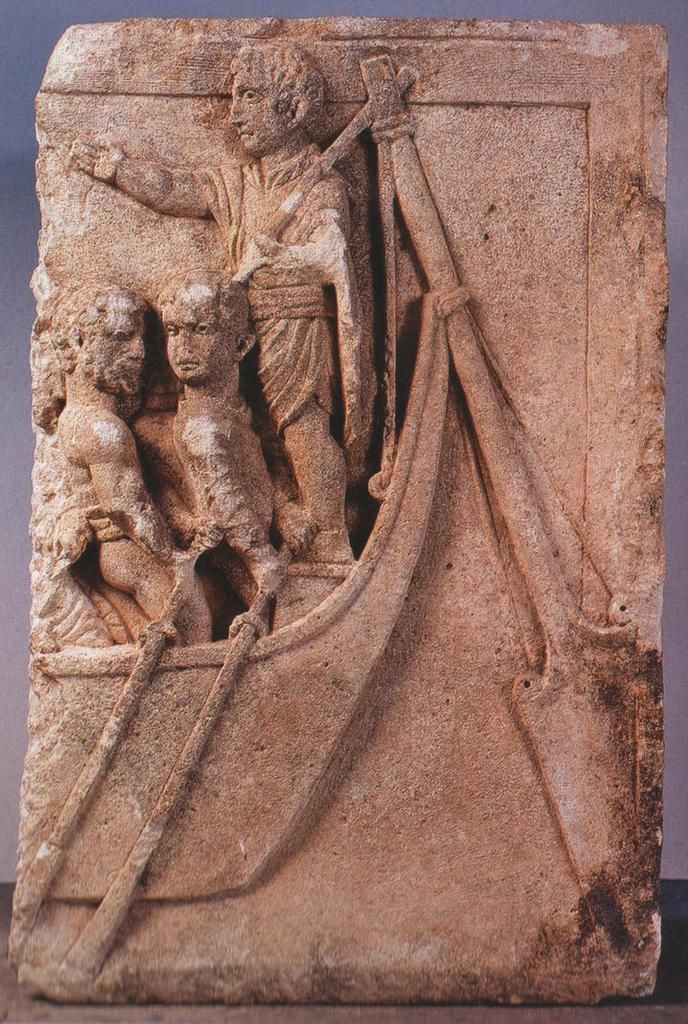
huib wrote:wat is the purpose of the rope attached to the rudder of the first boat
These ropes keep the rudder from swinging lef and right and toppling backwards at the moment the helmsmen stops holding it. These rudders were not attached properly to the stern like late medieval or modern rudders do. This is a flexible system, like the mast that can be removed, and all this its effective when passing shallow or rocky water, low bridges, even pulling the whole boat over a short stretch of land gets easy this way.
But I should have fastened these ropes to the metal rings clearly shown on the tombstone. Now I attached them to the oar peg. Which must have been my lazyness

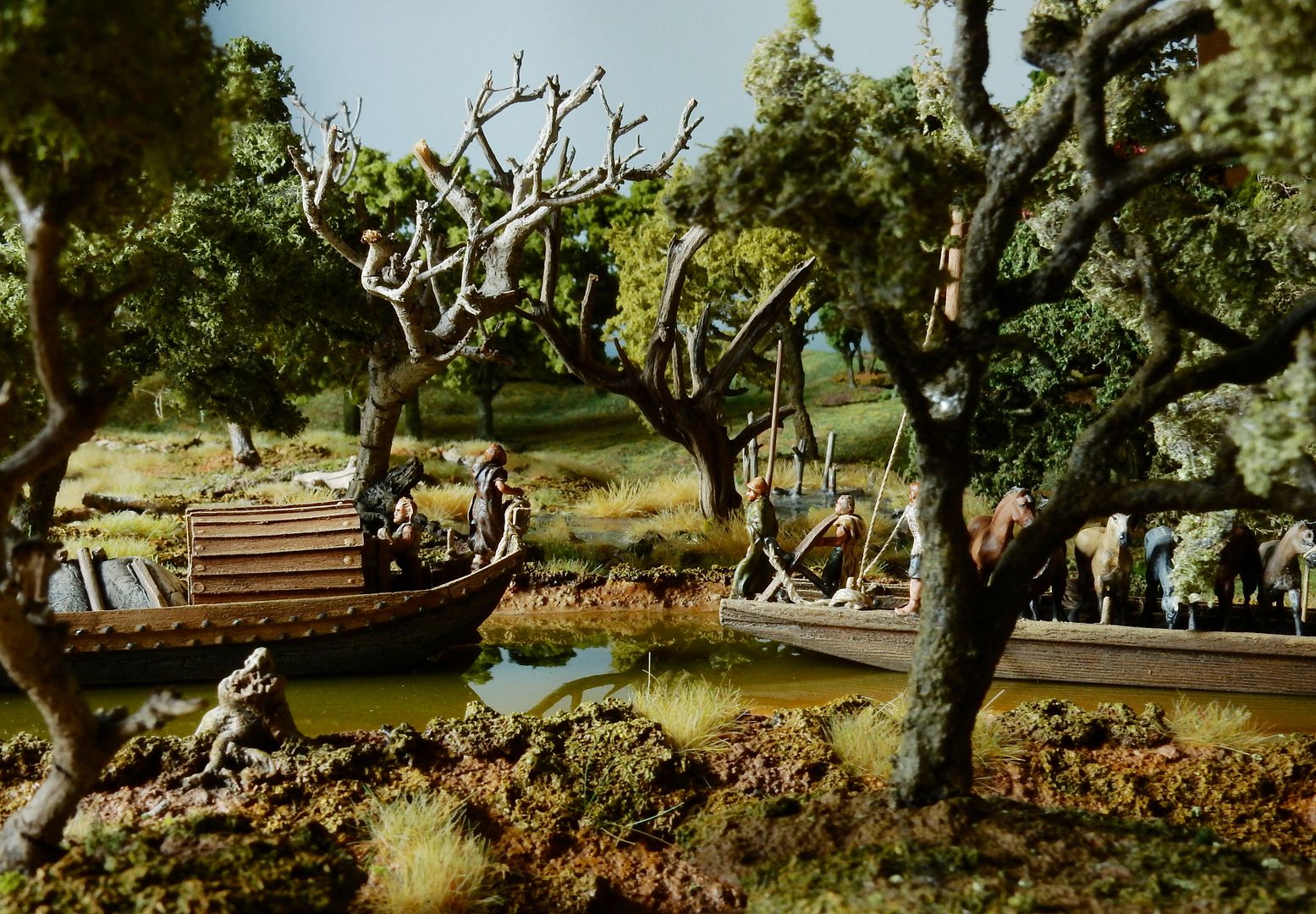
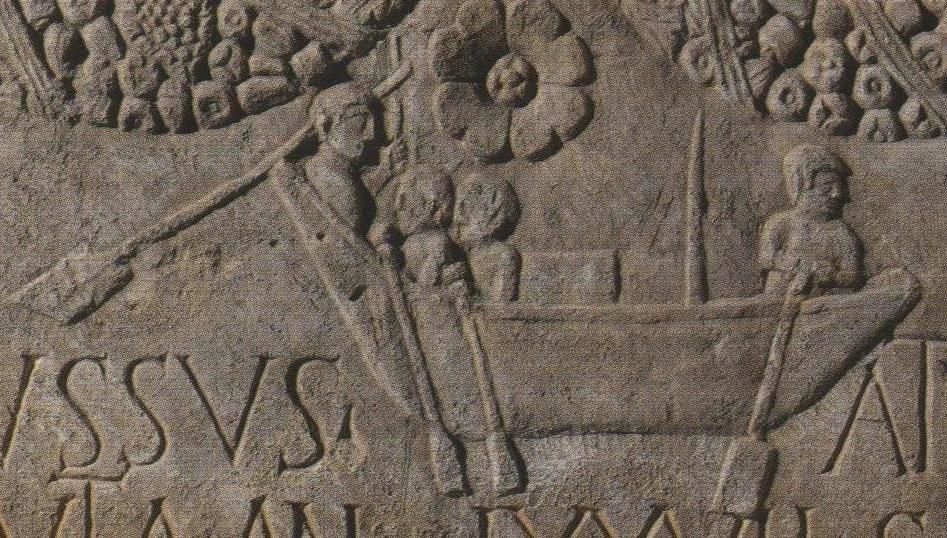
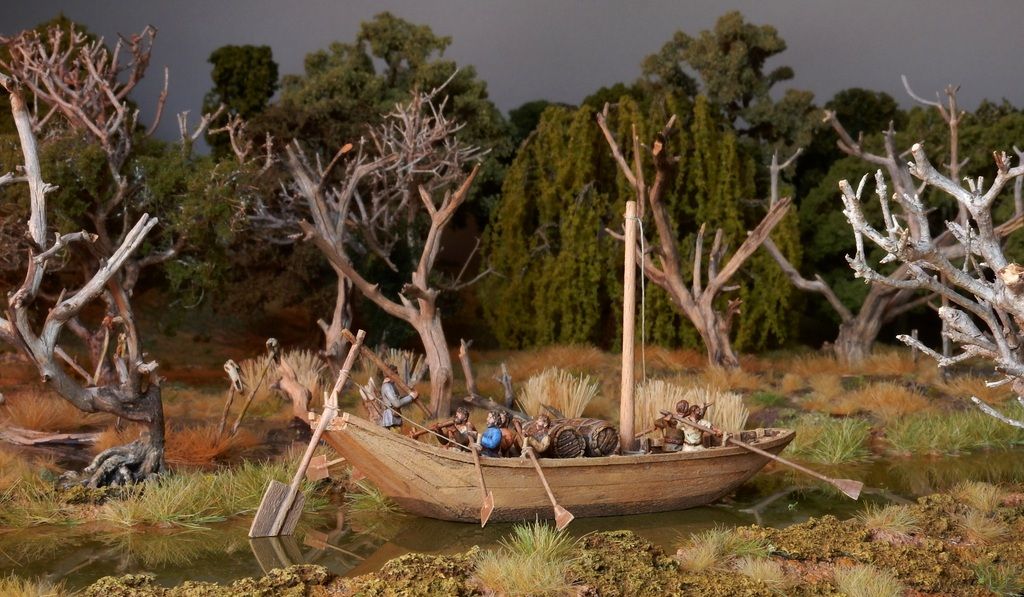

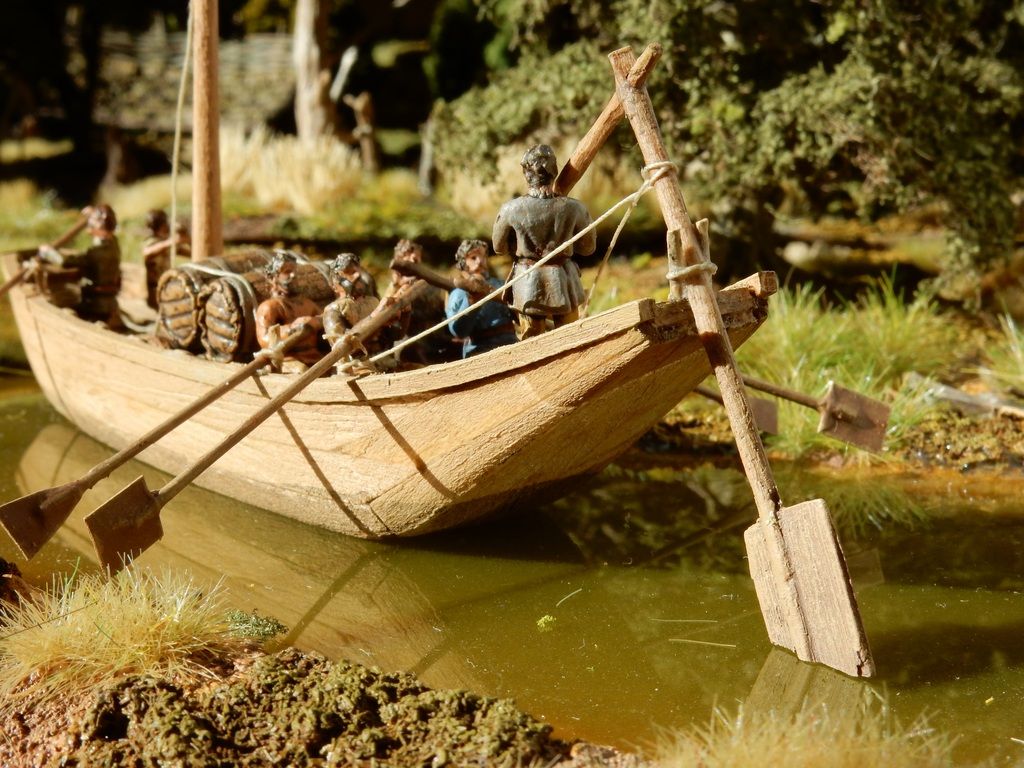

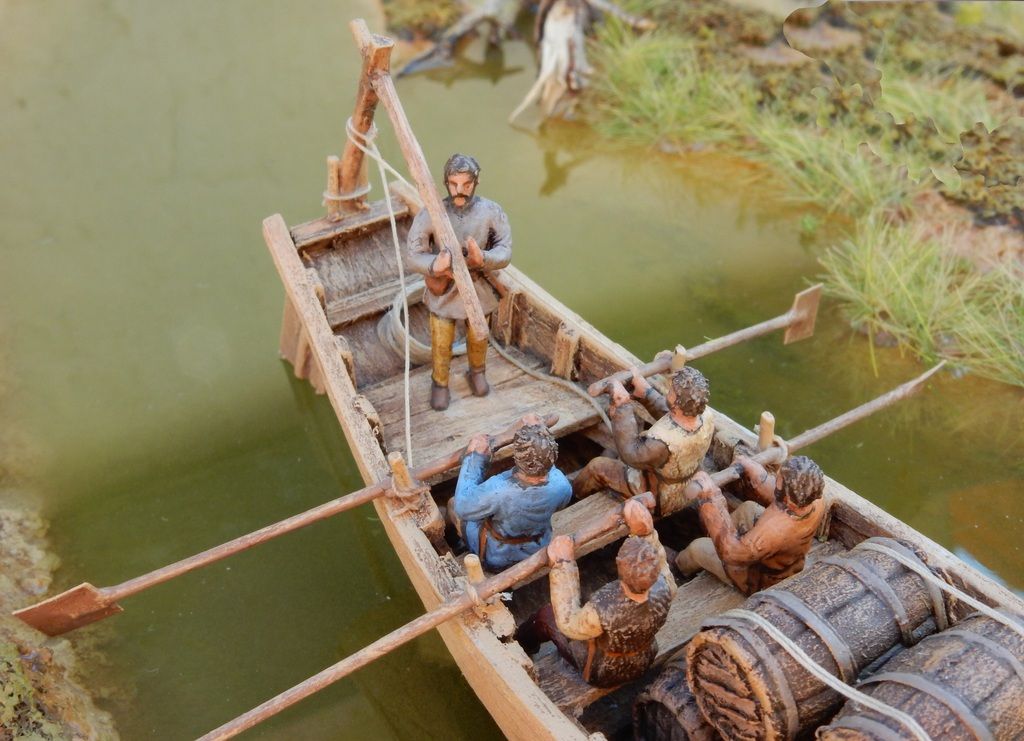
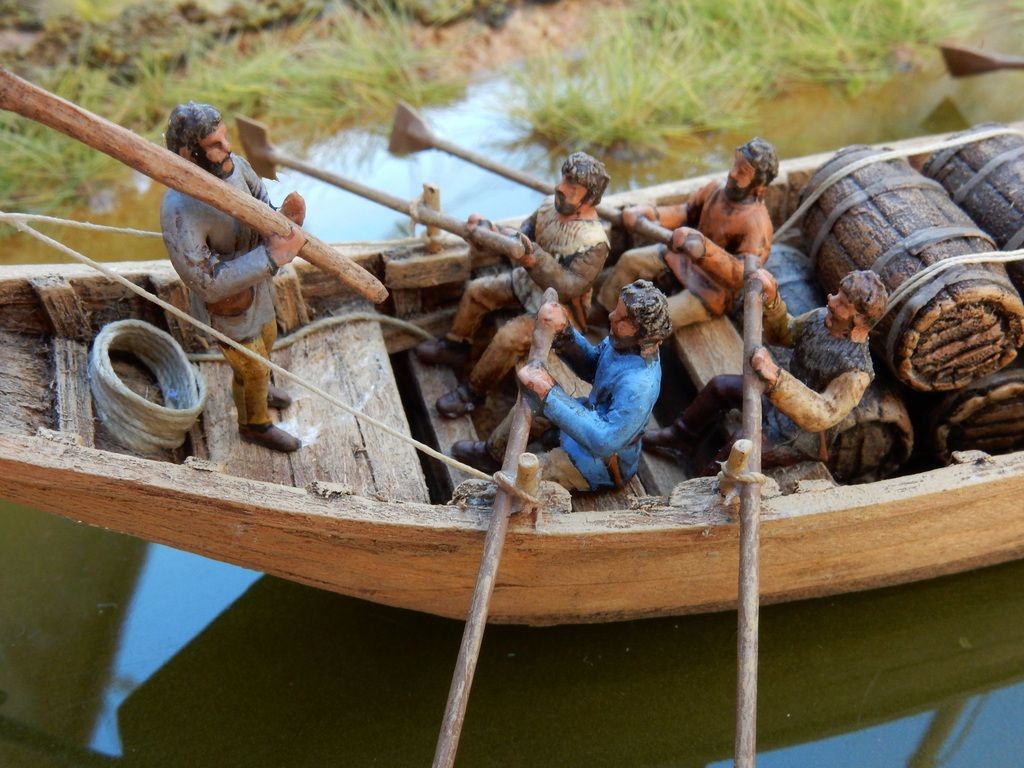
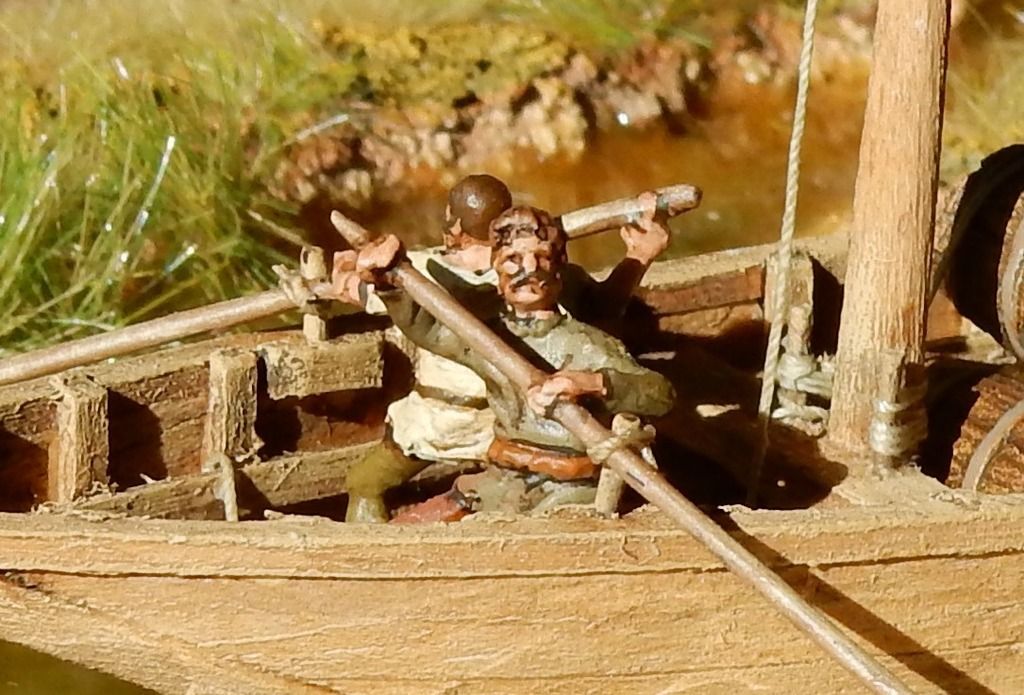
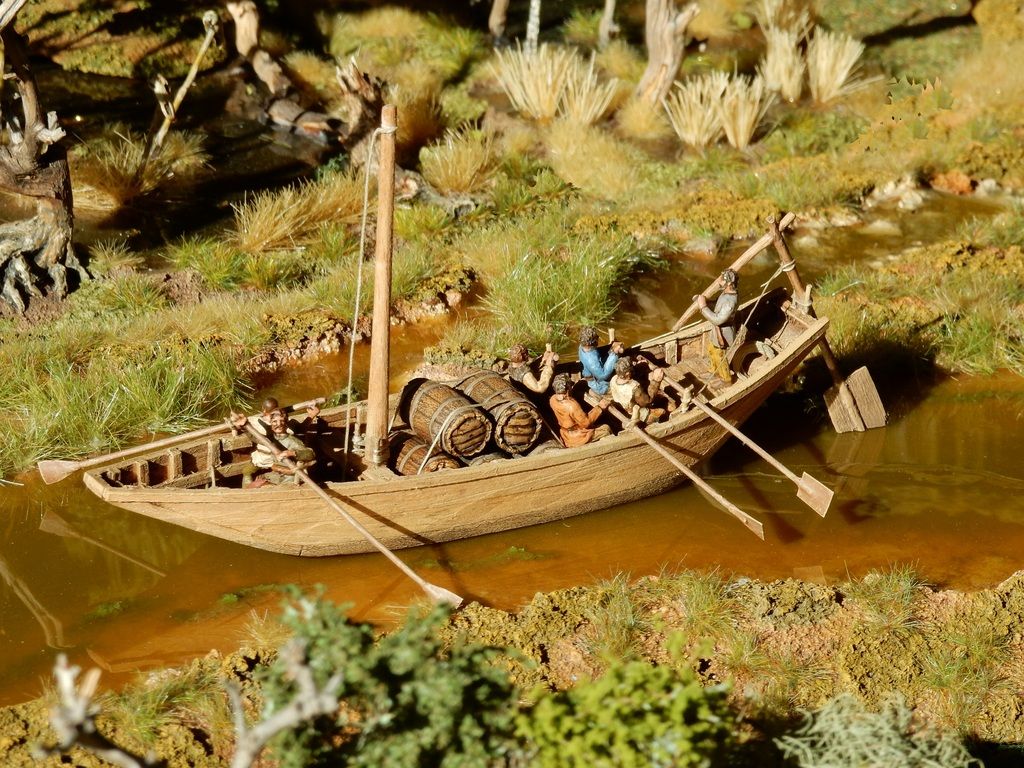


 Supporting Business
Supporting Business

 Moderator
Moderator

